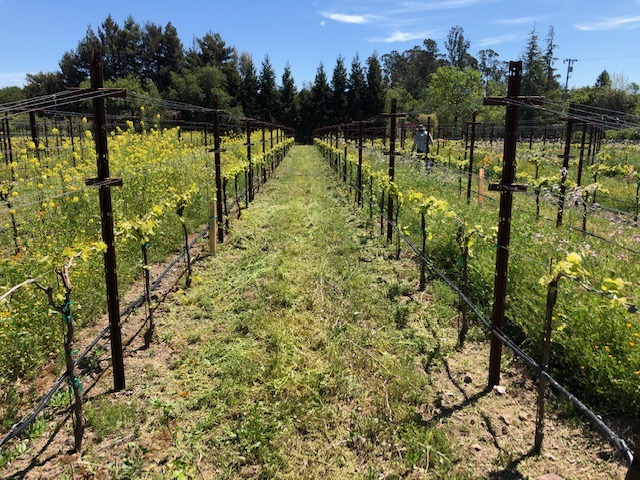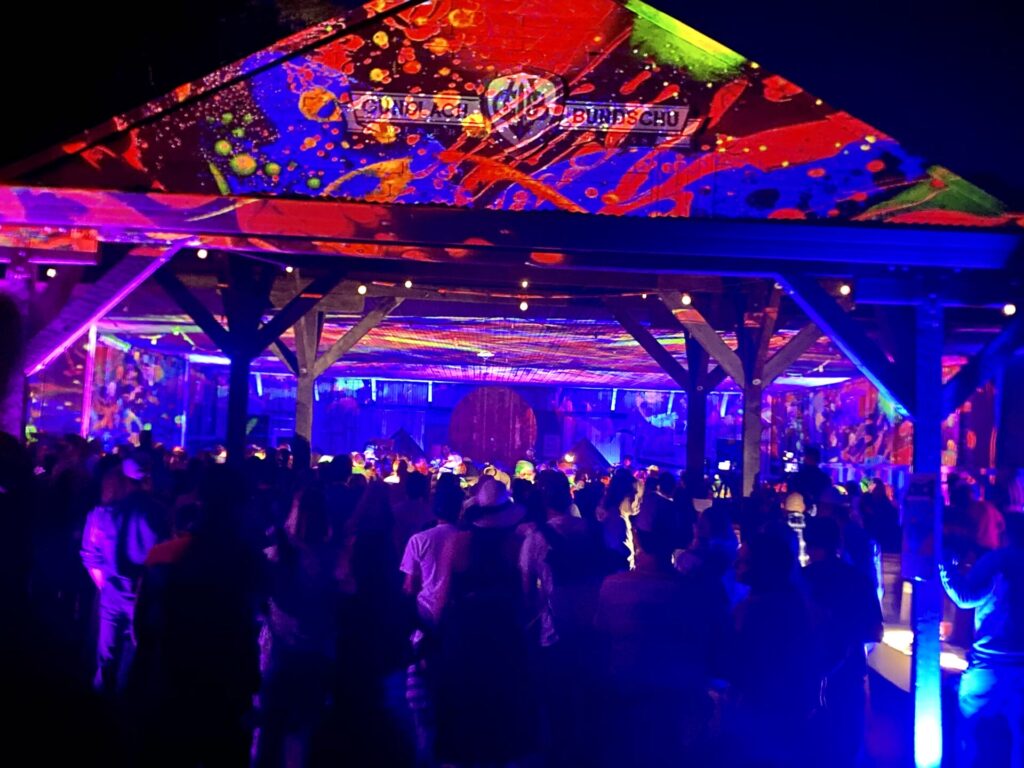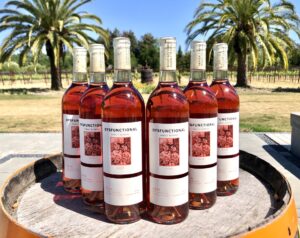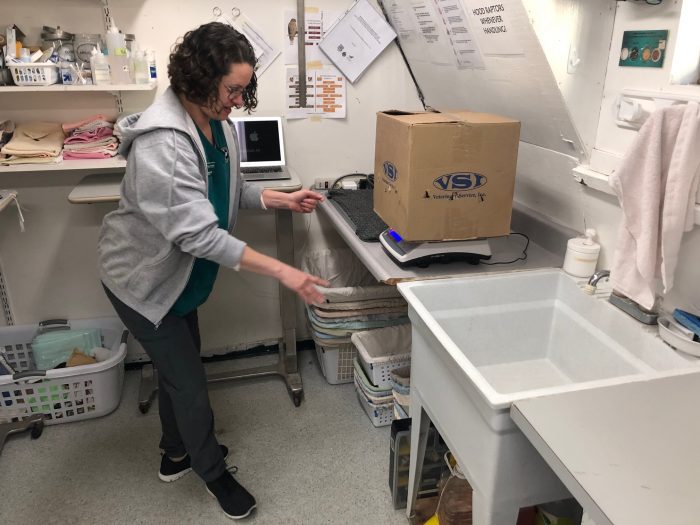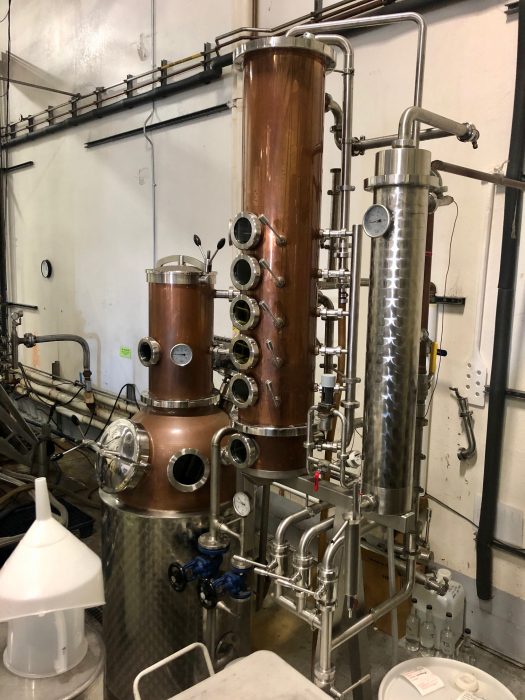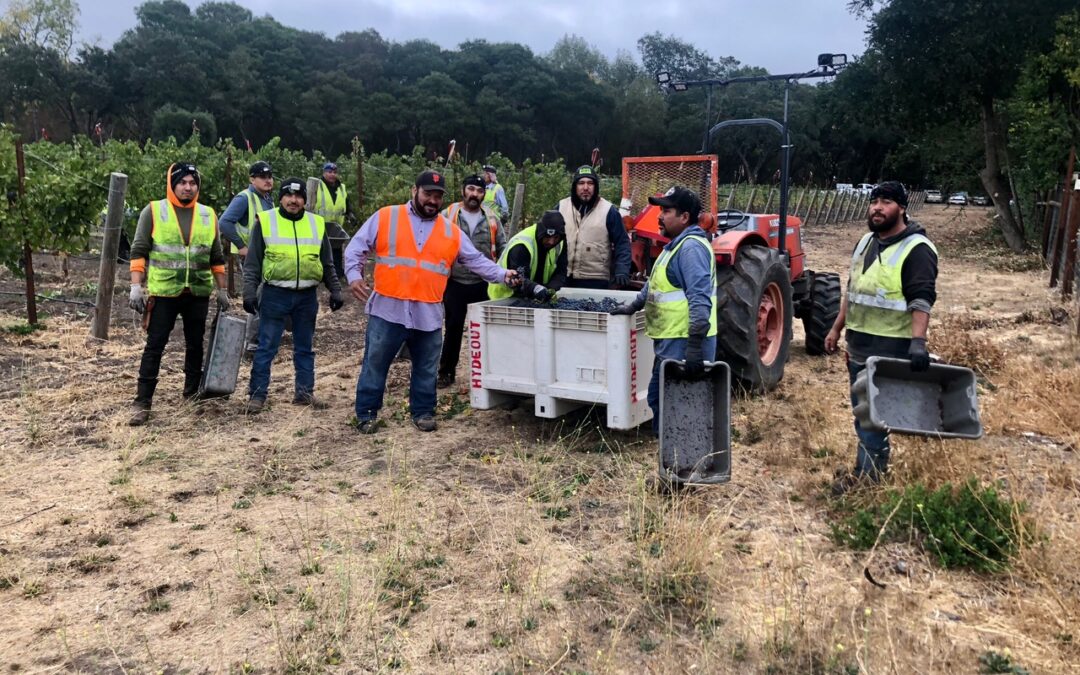
Oct 16, 2021 | 2021 harvest, Dysfunctional Family Winery, Hydeout Sonoma, mustard blooming, Sonoma, Sonoma Farming, Sonoma lifestyle, Sonoma Valley
For Hydeout Sonoma and Dysfunctional Family Winery, it’s another wine harvest in the books. Vintage number twenty-three for me.
Here is a quick pictorial essay of the entire 2021 season.
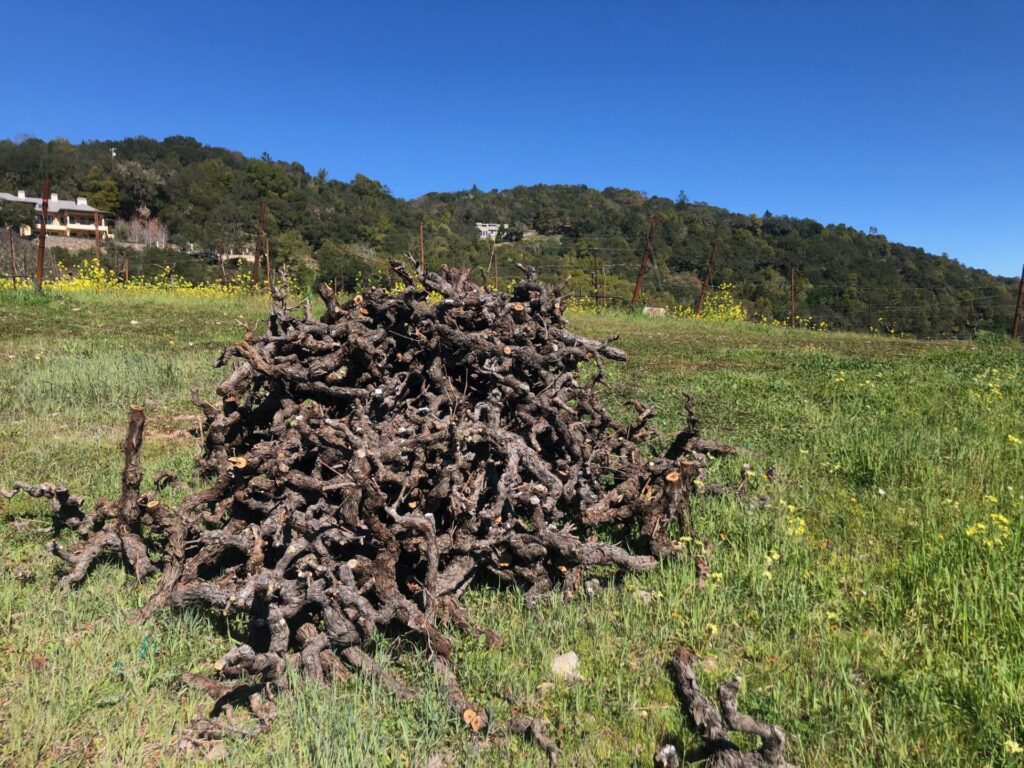
On a bright blue day in February, pruning of the dormant vines is the first order of business (here we severely pruned an old vine Zinfandel block and piled up these cuttings for a local artist’s wood project)
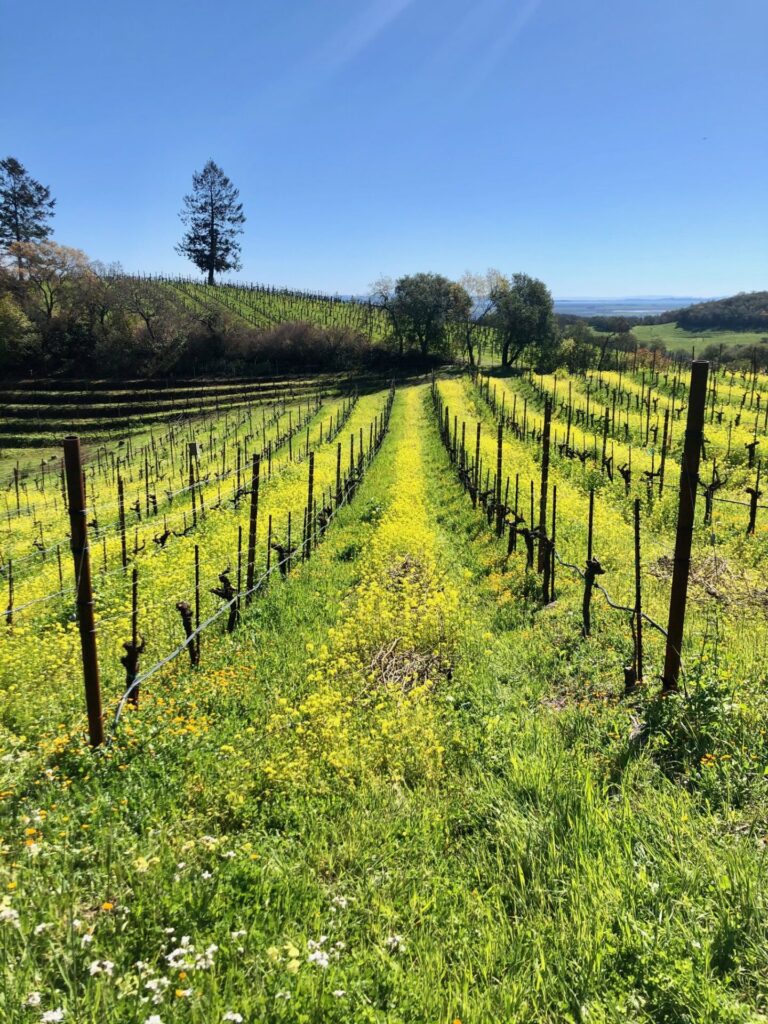
The vines after pruning, a bit of rain falls, and the mustard cover crop starts to push
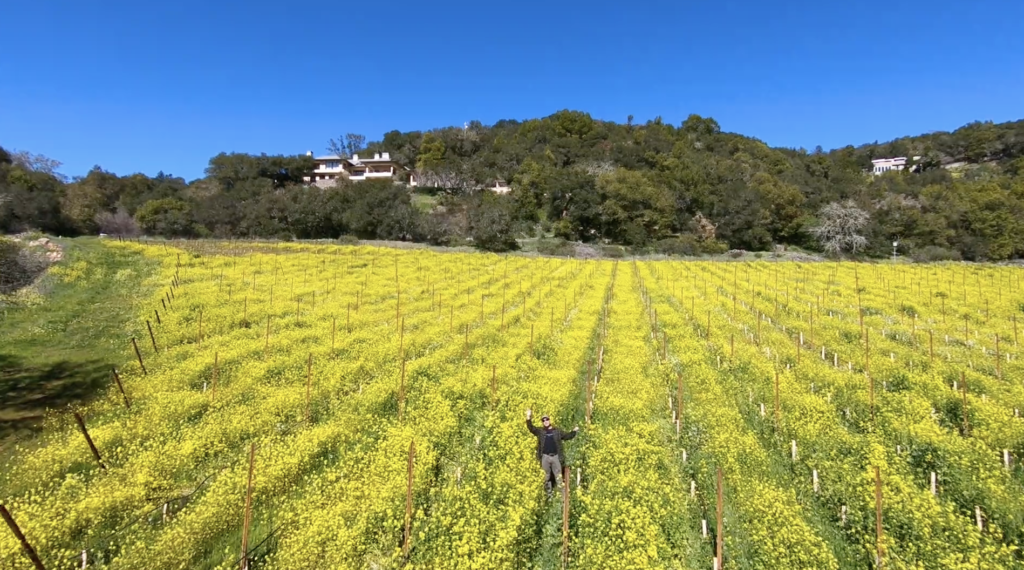
Soon the mustard is towering over the vines (here I am in a drone-shot in a newly planted Cabernet block)
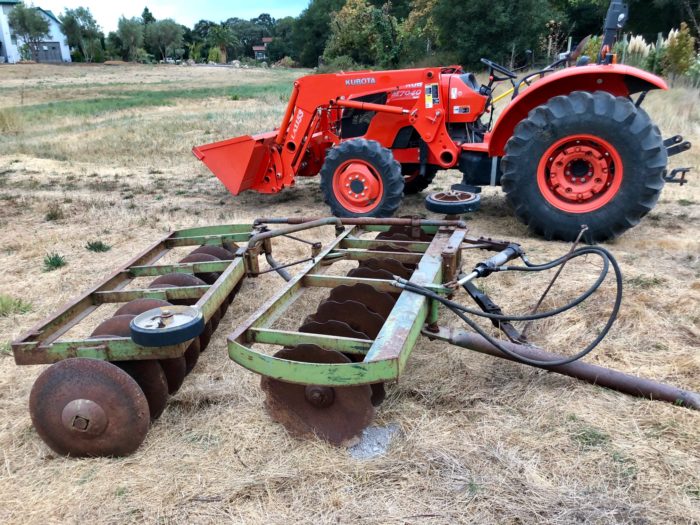
It will be time soon to begin actively farming for the season, and so we start prepping the equipment for the next few months of heavy use.
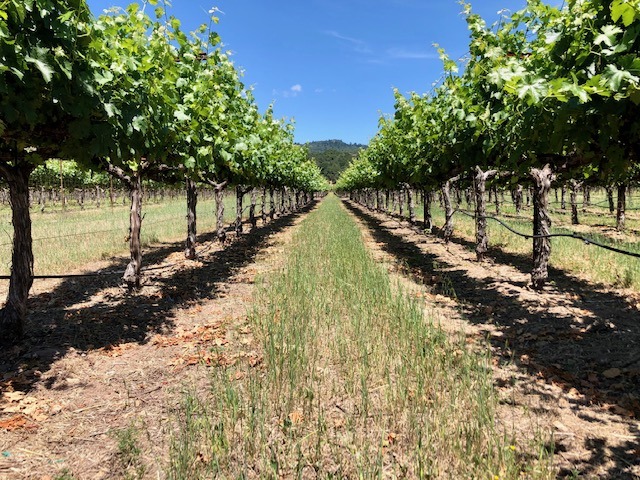
But grapevines are hardy and soon the vine shoots are elongated, and deep inside the canopy the fruit begins to flower and set.
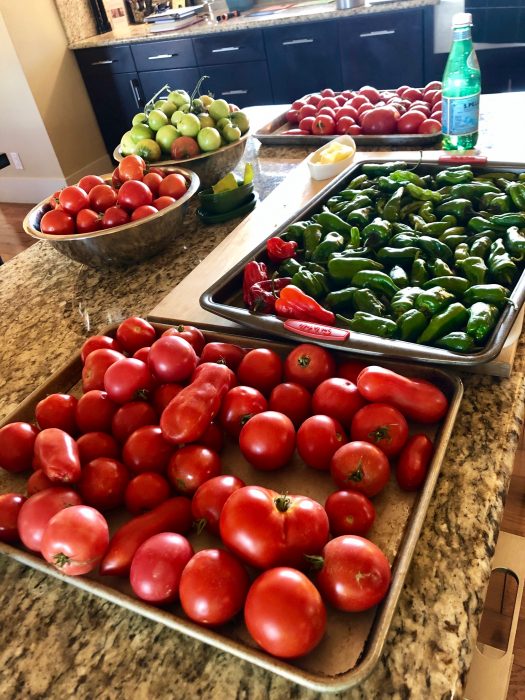
And our garden at the Hydeout responds to the summer heat with a bountiful harvest
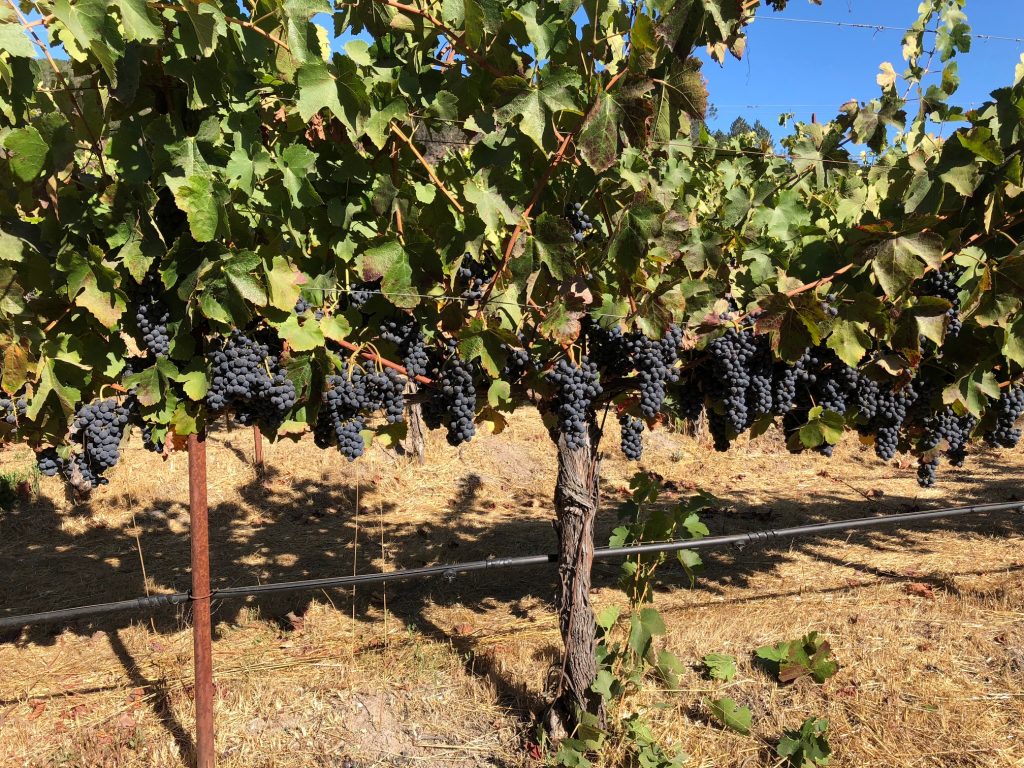
And the next thing you know, like magic, tons of fruit is ripening quickly.
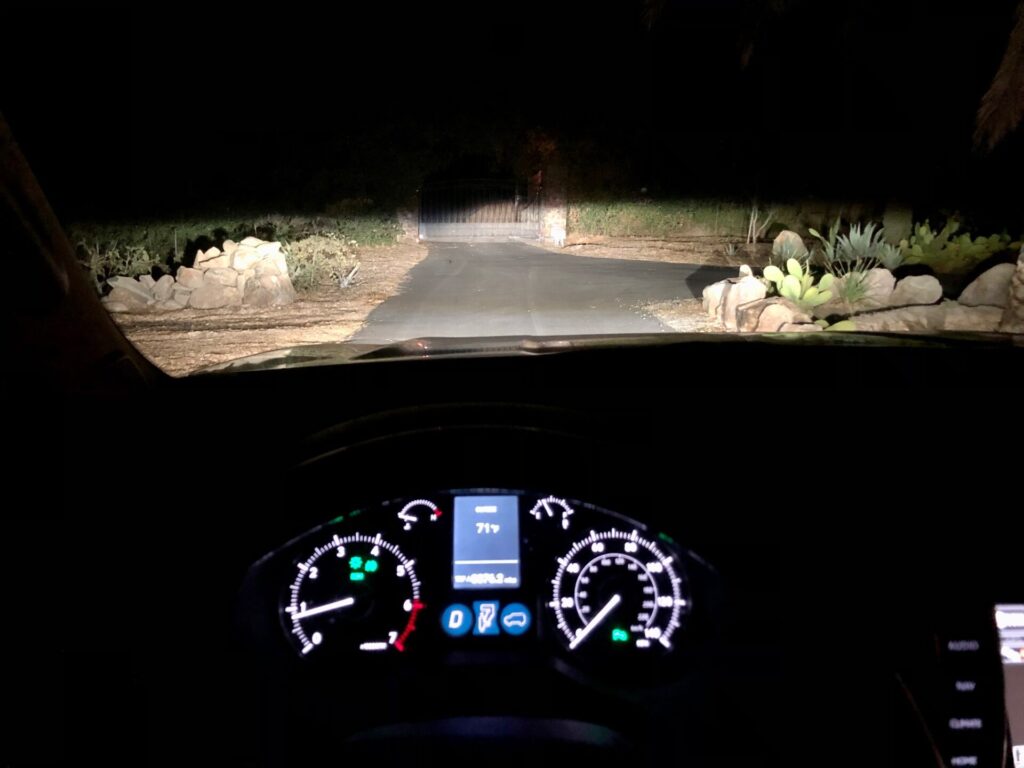
The first morning of harvest, and I am headed out at 4:00am, the car still a comfy 71F from being in the garage, but it’s a chilly 48F outside.
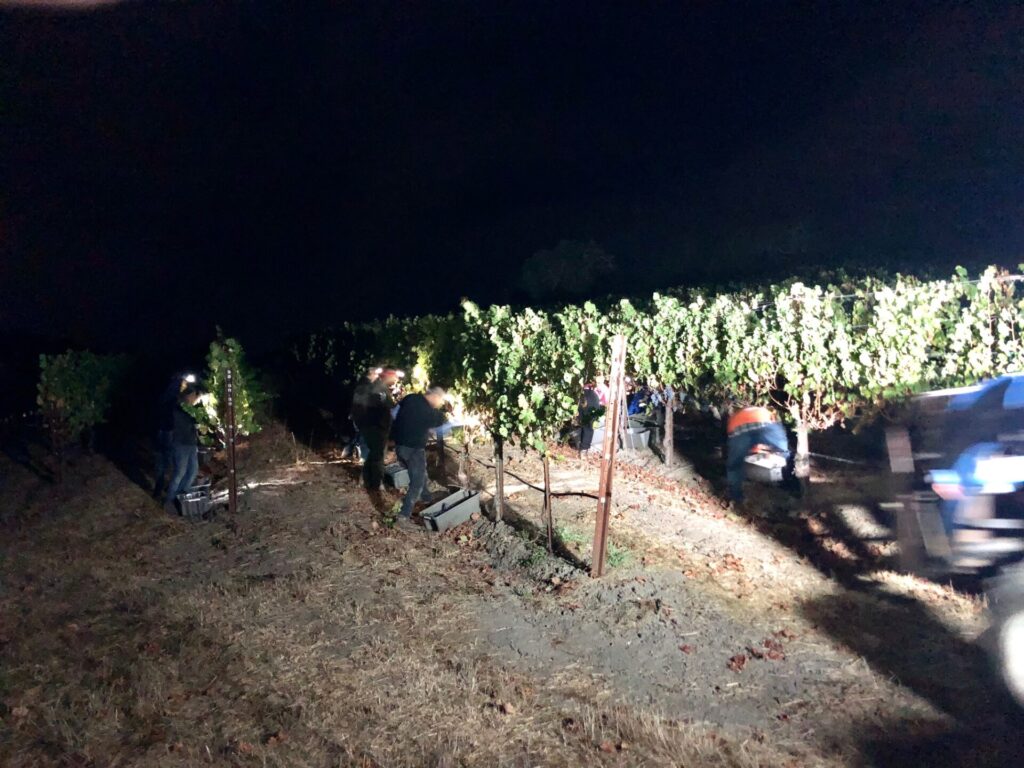
I arrive to find the crew well underway with harvest, as the first few vines get picked.
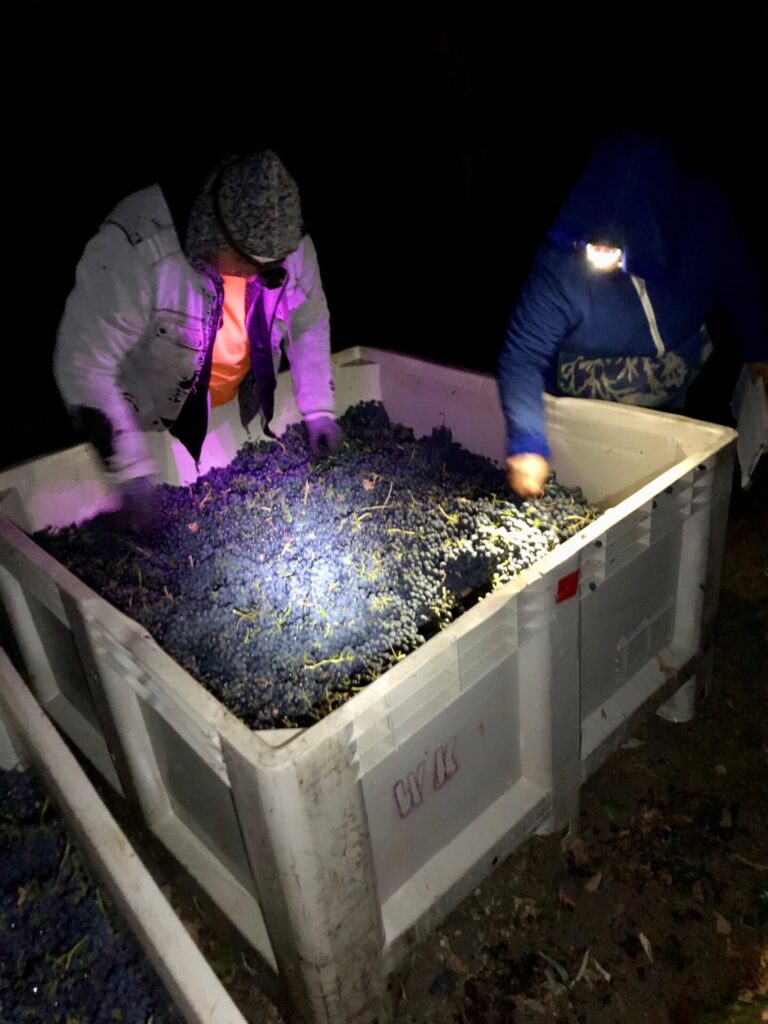
And after a long season of work, the half-ton bins begin to fill with ripe dark inky fruit
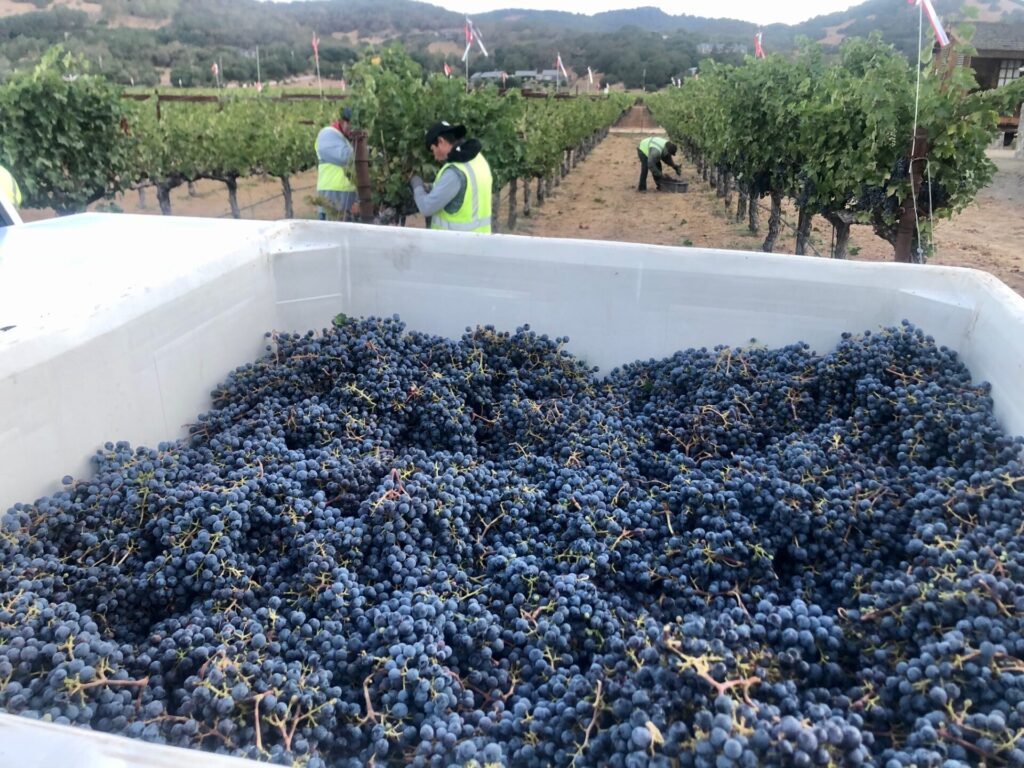
The sun rises and last few rows of this block get harvested.
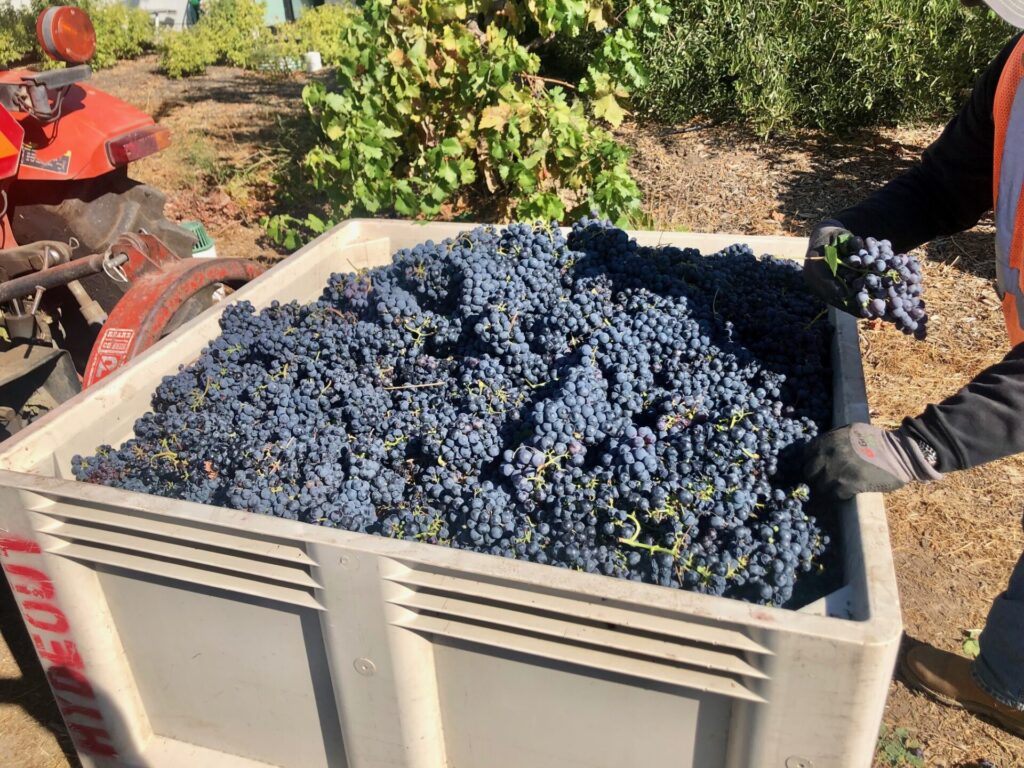
And soon many tons of perfectly ripe fruit are ready for delivery to the winery
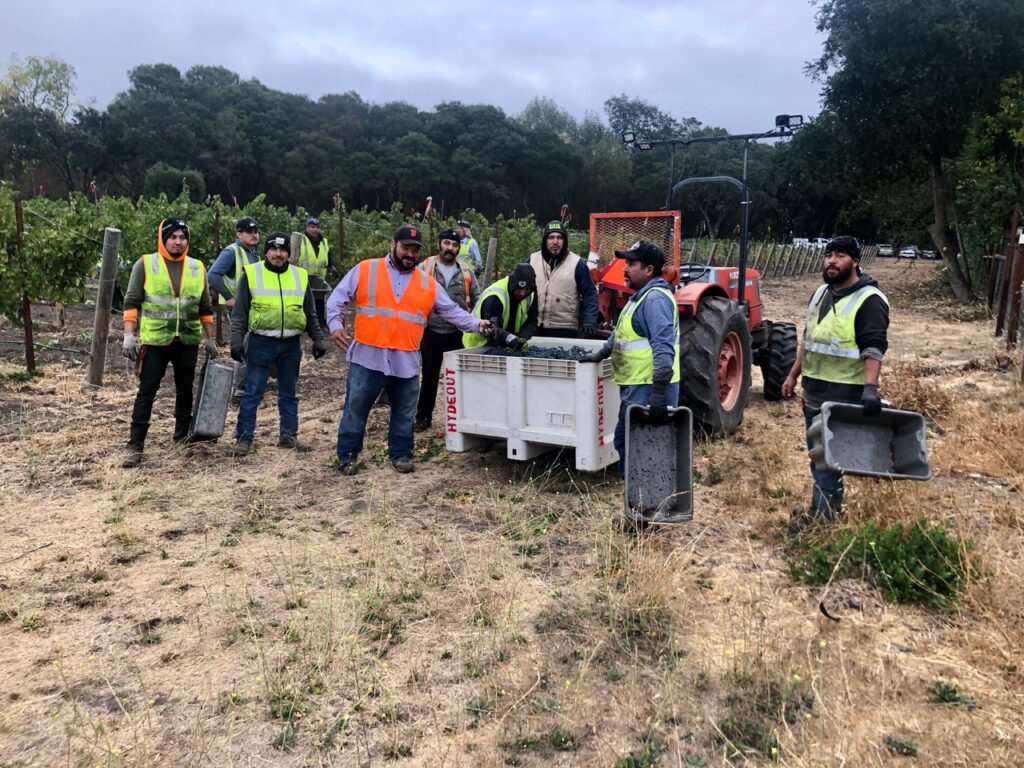
And eight long weeks later, the last bin of fruit is picked and is headed for the flatbed truck, and the team takes a big sigh of relief.

And now the work moves to the winery, here tank #20 is cleaned and prepped for some ripe Syrah from Kenwood
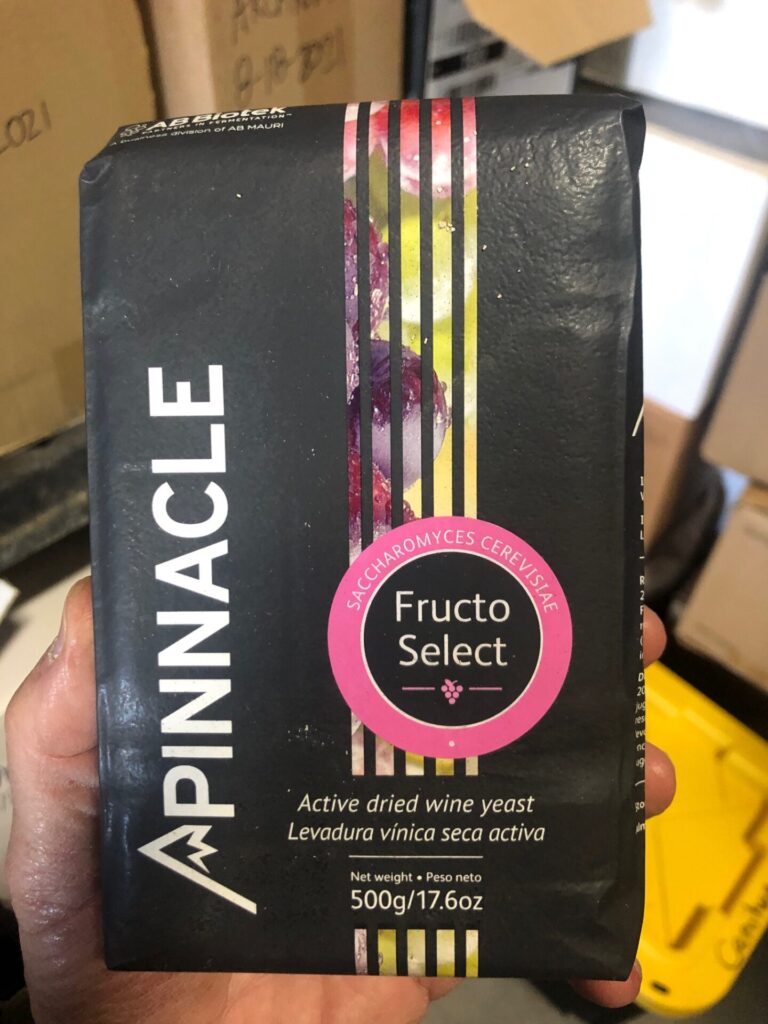
The yeast selection for this cuveé has been made, and this particular selection is a powerful one that will reliably finish fermentation in high-alcohol super-ripe red wines
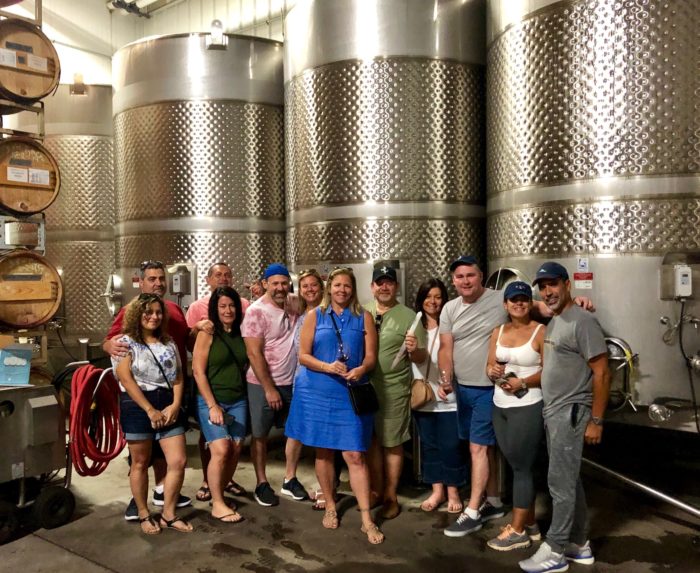
Excited clients, family, and friends stop by the winery to celebrate a year’s worth of effort safely in tank
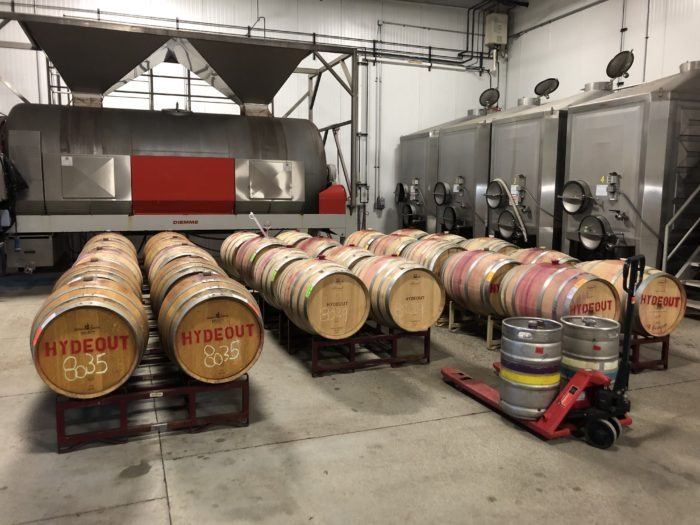
And once fermentation is complete a few weeks later, the wines are “barreled down” and the season is put to bed!
Click on these live-action videos to get the real feel of the moment:
Picking fruit by hand on a steep hillside
Filling a half-ton bin from the forty pound lug boxes
At the winery, raw fruit from the field is processed in the destemmer
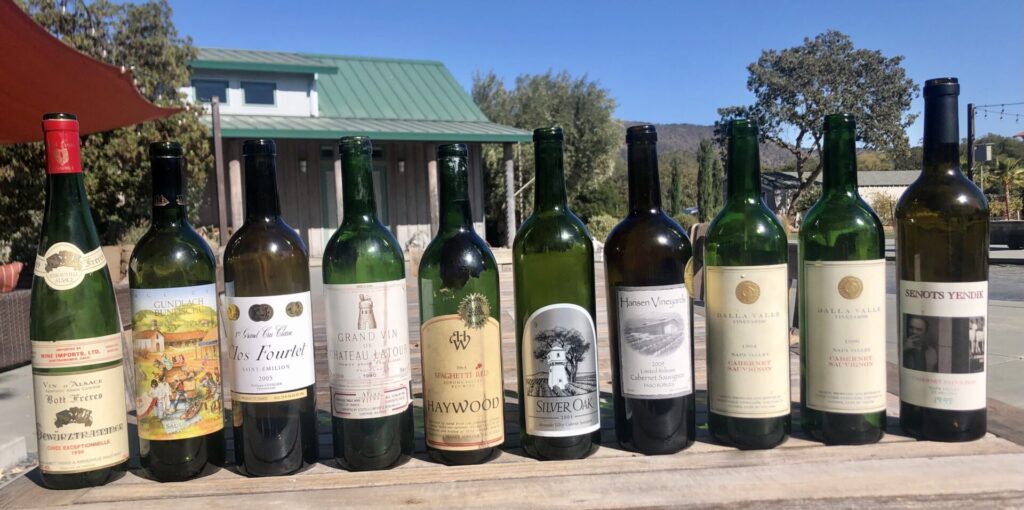
After the harvest, some wine-loving friends gather to share ten special old bottles from our cellars:
- Botte Frères Vin D’Alsace Gerwertztraminer, 1990, Cuvee Exceptional
- Gundlach Bundshu, Sonoma Valley, 1990, Cabernet Sauvignon
- Clos Fourtet, 1st Grand Cru Classé, Saint Emilion, 2005
- Grand Vin De La Chateau Latour, Paula, 1990
- Haywood, Spaghetti Red, Sonoma Valley, 1983
- Silver Oak, Alexander Valley, 2003, Cabernet Sauvignon
- Hansen, Limited Release, Paso Robles, 2009, Cabernet Sauvignon
- Dalla Valle Vineyards, Napa Valley, 1994 Cabernet Sauvignon
- Dalla Valle Vineyards, Napa Valley, 1996 Cabernet Sauvignon
- Senots Yendick, Napa Valley, 1999, Cabernet Sauvignon
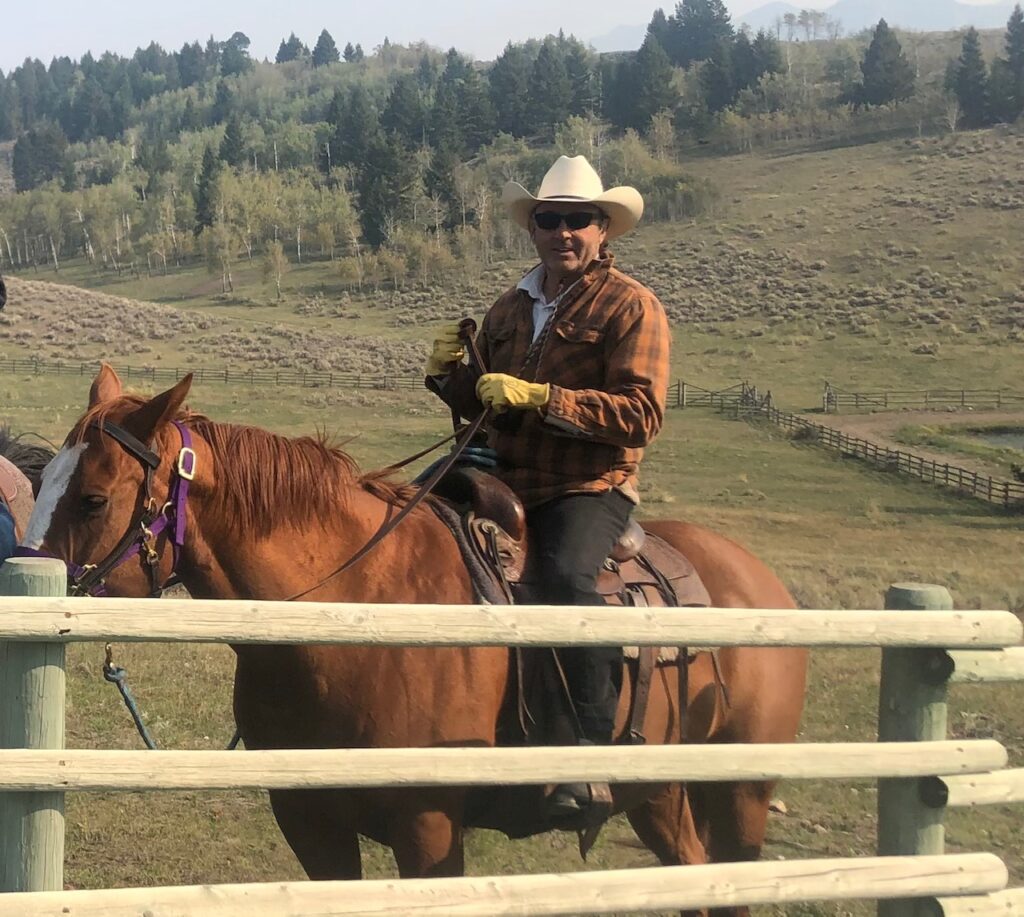
And there’s just enough time before winter arrives for this winemaker to head off to Ennis, Montana for some fresh air
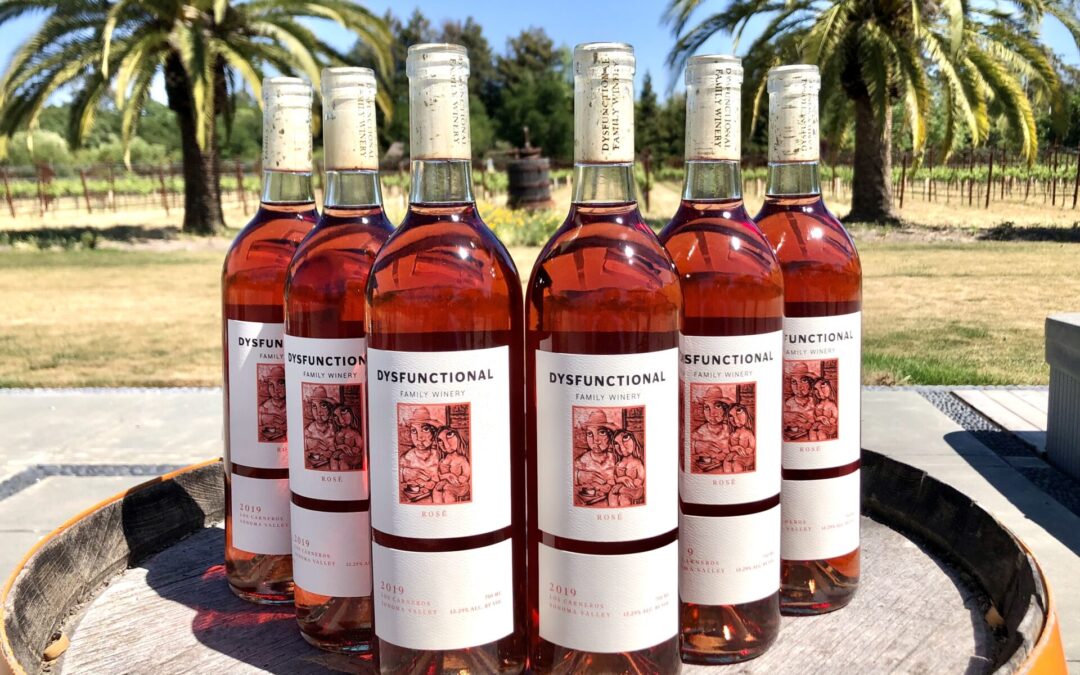
May 14, 2021 | Dysfunctional Family Winery, Hydeout Sonoma, rosé
Sizzling sale of racy rosé – till sold out. See below and use the secret code!…
Less than 20 cases remaining of our crisp, racy, and delicious Dysfunctional Family Winery 2019 Rosé.
Marked down 40%, Half and full cases only, 6 bottles for $86.40, 12 bottles for $172.80
Simple order process using the SIZZLING discount:
- Click on link – https://www.sonocaia.com/shop/
- Select bottle quantity and click ‘add to cart’
- Click ‘checkout’
- Enter the discount code on the right: SIZZLING (all caps) and hit “Apply”
- Enter your basic customer info on the left and hit continue
- Choose delivery option “Pick up” or “Ship” and “continue”
- Complete the order
If you choose “pick up” we’ll have the wine ready for you here at the ranch next week. Or we’ll ship to you asap.
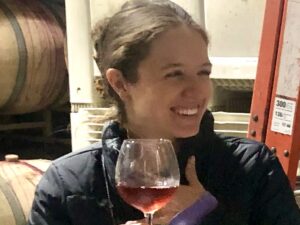
Order today before it’s all gone. Chill it or freeze it or put a few ice cubes in your wine glass and pour – anything goes with rosé!
About: This rosé was made in the classic French ‘saigneé style’ – ‘bleeding off’ the raw pink grape juice from a gorgeous tank of just-harvested red fruit – then cold fermented in stainless steel, lees stirred for a creamier finish, and then racked back to neutral oak barrels for settling and aging; all resulting in a wine that is a dark cotton candy in color, bright and racy and fruit forward, with a soft finish; perfect for warm sunny afternoons and summer poolside dining.
Blend: 65% Cabernet, 23% Syrah, 9% Zinfandel, 3% Grenache
Totem pole – a new ranch project
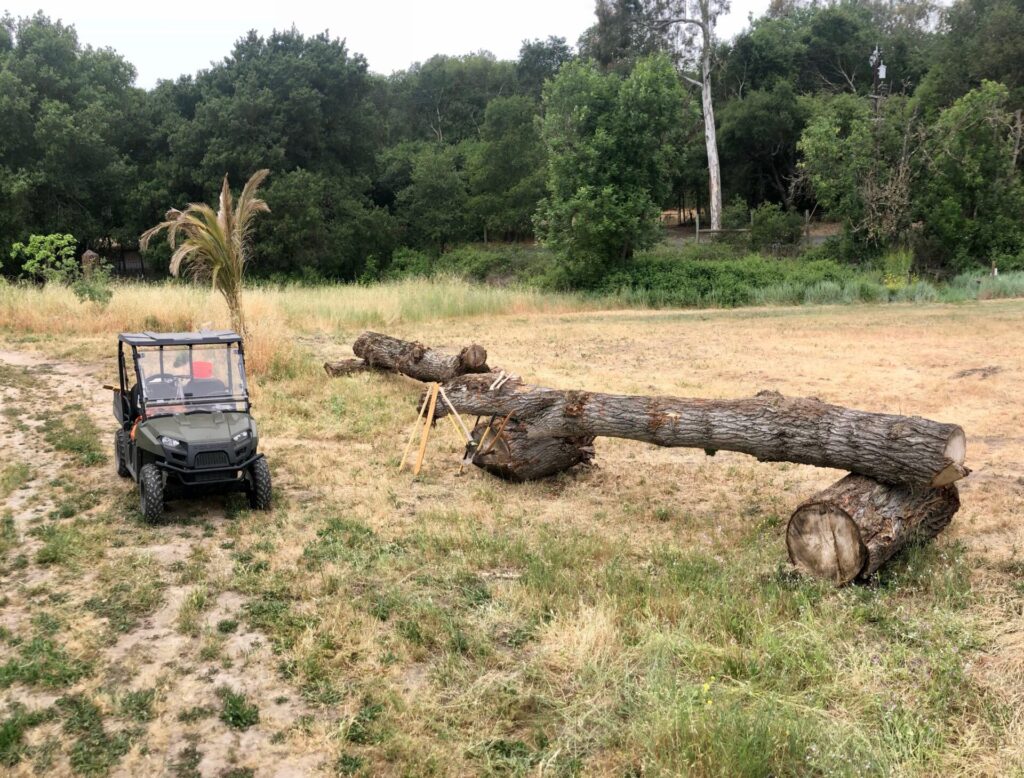
There is a Federally registered first-nations “Miwok” artifact site on the ranch. So, a new project – a totem pole.
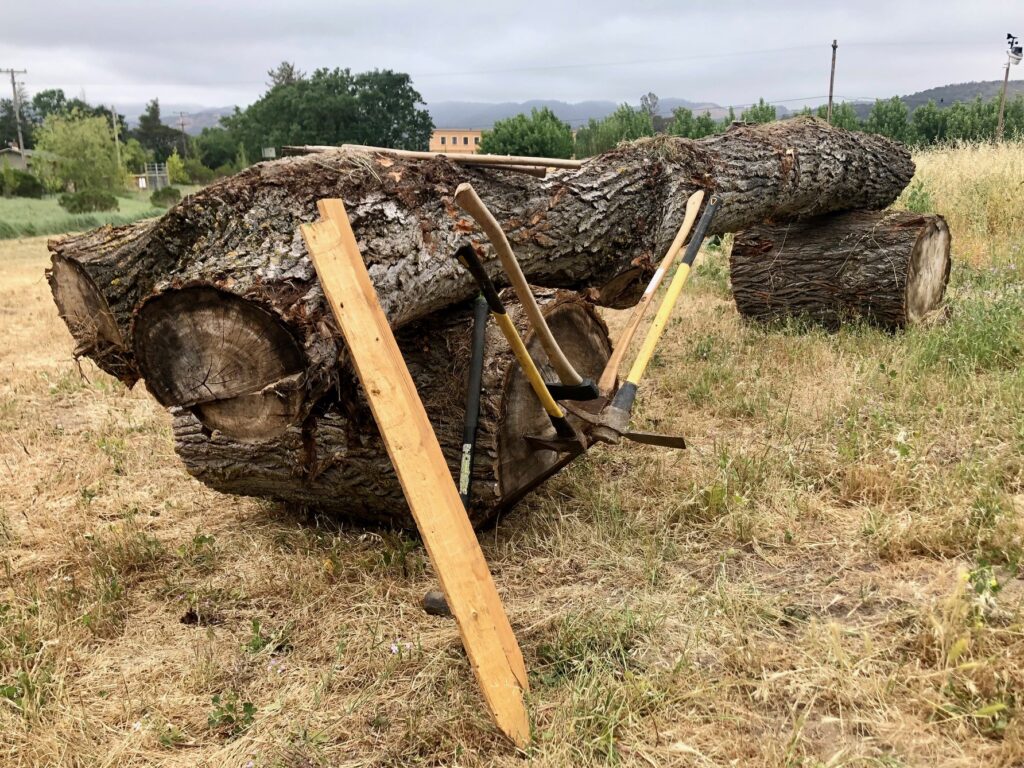
Totem poles were monuments created by First Nations of the Pacific Northwest to represent and commemorate ancestry, histories, people, or events. We thought it would be fun to create a modern Sonoma version of a totem pole to commemorate the local ancestors who once occupied this land. Being careful not to appropriate and warp the native culture, we’re steering clear of traditional motifs and looking at alternate totem design ideas.
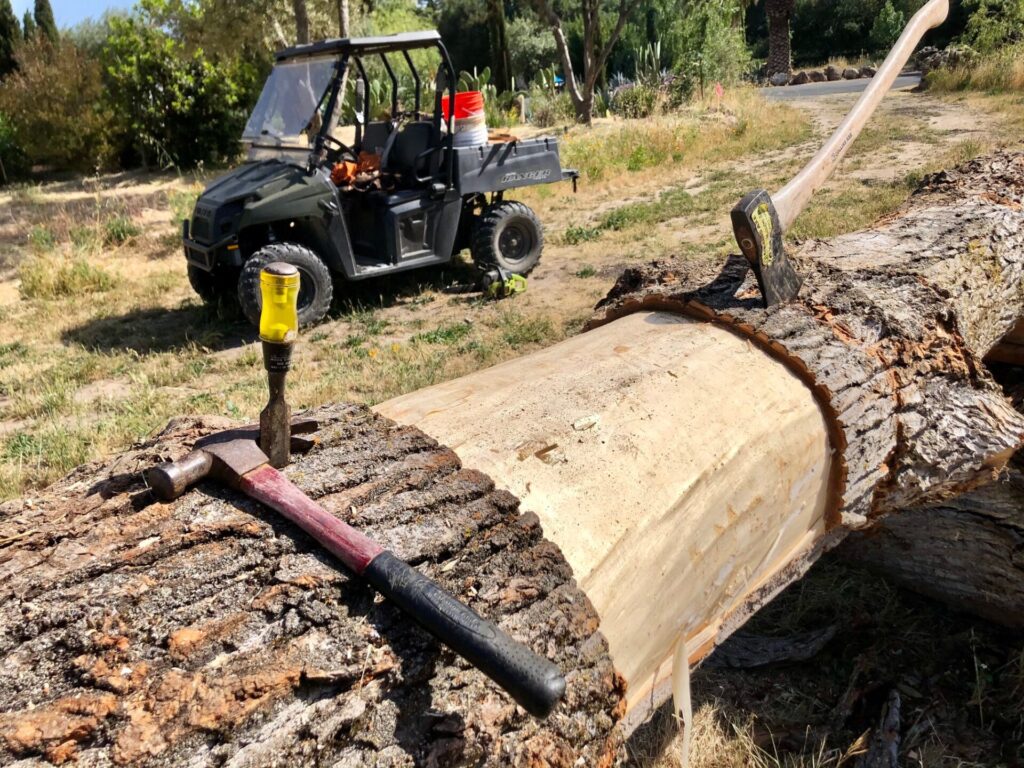
Another couple of hours and it’s starting to look like something that can be carved. Into what is the question? If anyone has ideas, please offer them up!
In and around the gardens – potatoes, lettuce, wild birds, and awards
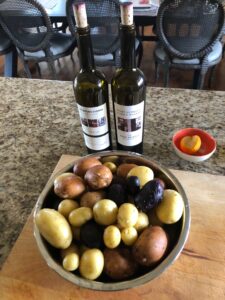
The ranch veggie garden is in Spring mode and the first crop of ‘new’ potatoes are in…
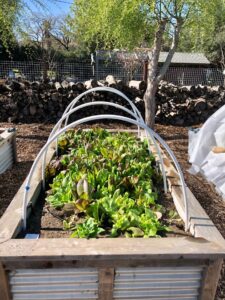
…in just two small raised beds, over 250 heads of lettuce harvested and shared with friends and family. Seen here, the third and final heads of lettuce from the rather tired original roots.
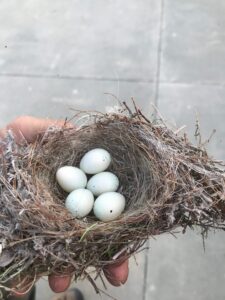
Spring is definitely here when the trees, roof eves, and gutters are stuffed with tiny wild bird eggs…

SONOMA May 8, 2021 — Hydeout Sonoma has been selected for the 2021 Best of Sonoma Award in the Agriculture Cooperative category. Award winners include local Sonoma companies that enhance the positive image of small business through service to their customers and our community.
Flashback – the terrible Sonoma and Napa fires of 2017 and 2020
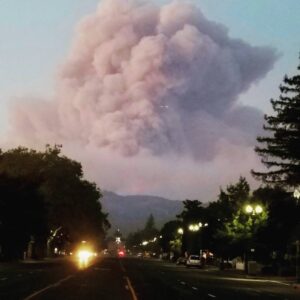
Let’s hope we do not have to re-visit this ugly scene from 2017. But it is so darn dry out there already! Our weather station says we received only 11 inches of rain this season out of an expected 35 inches normally. Here at the ranch, we’ve cut way back on irrigation, let the lawn go brown, and doing everything possible to reduce aquifer usage.
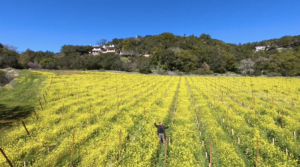
Hoping for more of this…
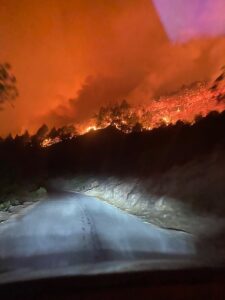
…and less of this from the summer 2020!
Thanks to each of you, our 900+ member readers of this blog post!
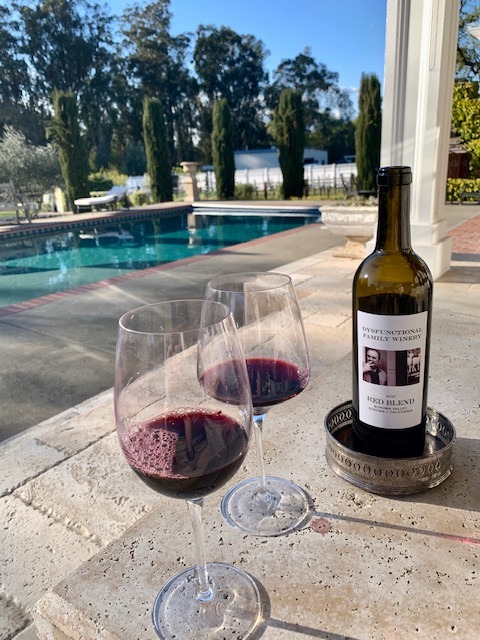
May 8, 2020 | Wine
What can a winemaker do to ease the shelter in place burden? Hand deliver wine, of course. Members of our growing ‘Dysfunctional Family’ wine community receive their bottles of wine, sometimes in a direct handoff, sometimes over the fence. This was in early April 2020 before masks and gloves! And it’s also a photo travelogue of sorts from around Sonoma. Enjoy:
In other ranch and grape news around Sonoma Valley…
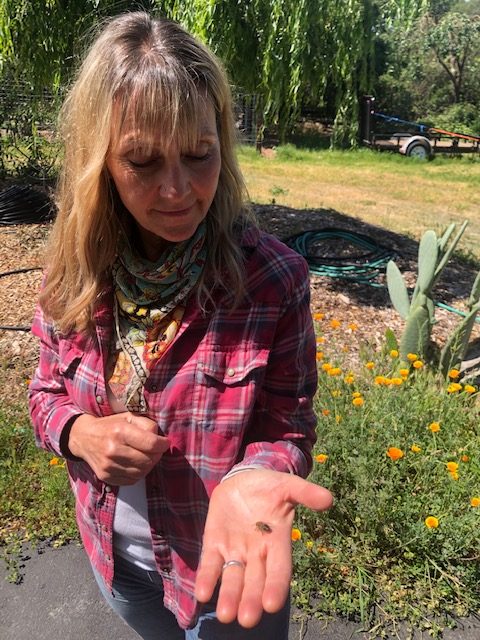
Renowned beekeeper and Hydeout Sonoma neighbor Chere Pafford finds a large drone honey bee napping on our driveway. A drone is a male bee that is the product of an unfertilized egg. Drones have bigger eyes and lack stingers. They cannot help defend the hive and they do not have the body parts to collect pollen or nectar, so they cannot contribute to feeding the community. The drone’s only job is to mate with the queen. Link: Sonoma Honey Bees
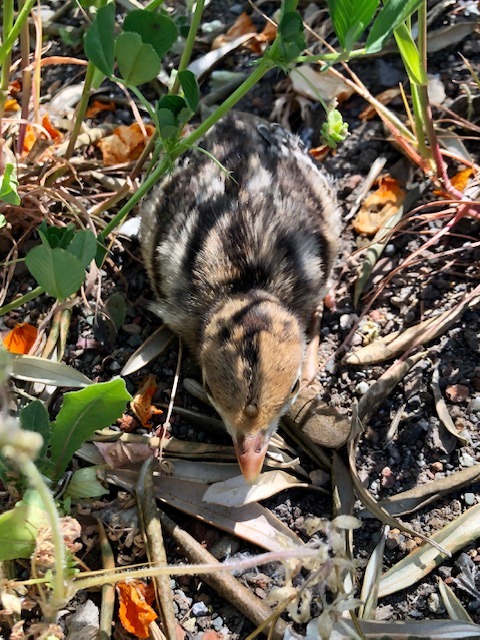
From the first clutch of wild turkey babies this season, we saw this one (and its 8 siblings) hiding in the brush under an olive tree waiting for its mother to return to collect them all. It’s not safe for them to wander around in the open while the Red Tail hawks are around. Link: all about wild turkeys

Bud break at the Dysfunctional Family estate vineyard, just after mowing the yellow mustard which had gone to seed. We’ll be launching our ubiquitous Dysfunctional Family wines – a Sagrantino-based ‘Estate Reserve’ and the Sonoma Valley ‘Red Blend’ – just as soon as the County lets us convert the old white barn into a functional winery. That story will be told in it’s entirety some day…
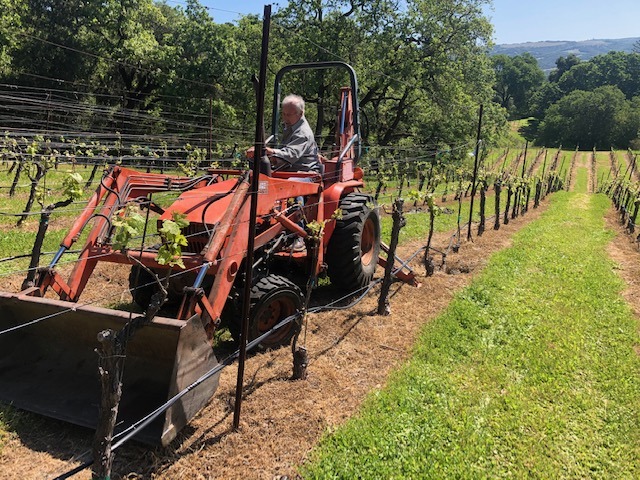
Client and friend Steve R. brings out the big gun (his old but very well maintained Kubota with the rear excavator attachment) to help us locate an irrigation supply line in his vineyard. He’s growing Cab Franc and Merlot here on Sonoma Mountain. Steve’s “Octagon” Morning Mountainside label is only available directly from the estate.

Famed photographer and Sonoma friend Jock McDonald makes an appearance dressed as if there was end-of-the-virus party. But no, we were just social distancing. Thankfully, it didn’t end up like the pre-virus visit with Jock naked in the pool and the rest of us trying not to look! Hah. https://www.jockmcdonald.com
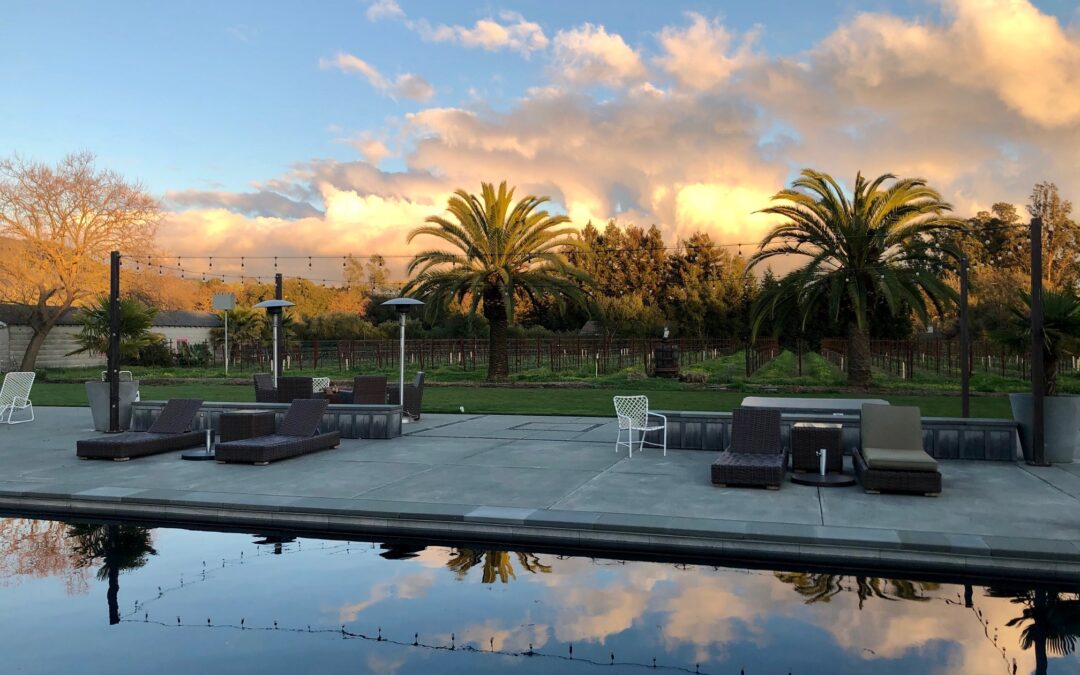
Mar 11, 2020 | Sonoma, Sonoma Farming, Wine
Sonoma farm life is explored, scroll through to be entertained, learn, and laugh…or just waste 10 minutes before your next ‘bored & working from home’ Corona virus zoom video conference.
Vineyard pruning in March
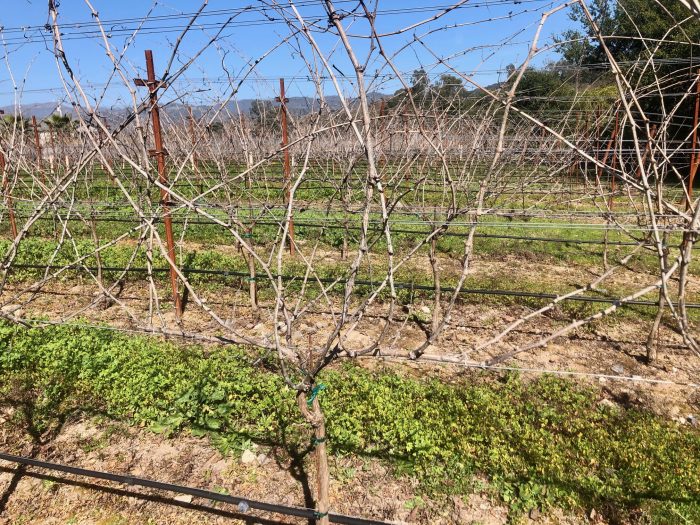
Here is an example of a grapevine waiting to be pruned. As a deciduous plant, it drops all of it’s leaves in winter and translocates carbs and nutrients from the woody shoots back into the roots. In spring, those nutrients push back into the new shoots supporting growth.
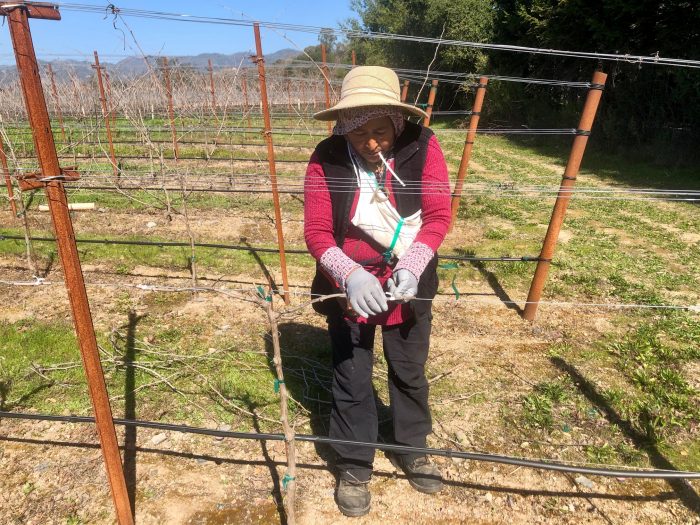
Our beloved Emma, a world class grapevine pruner at work.
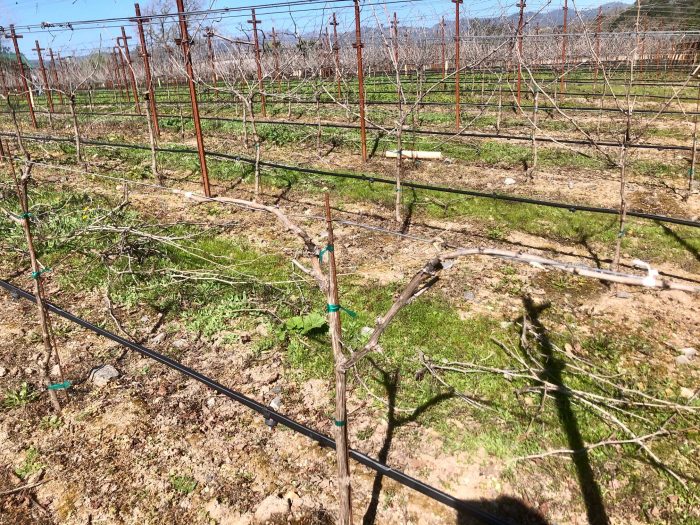
The pruned and tied vine. Note all the previous year’s wood has been removed (on the ground waiting for mowing into in-place compost), and only the ‘new wood’ has been tied horizontally to the training wire (the wire above the black drip hose). Picture this being done thousands of times per acre and you have some sense of the labor and expense of vineyard farming. Sonoma farm life
Gardening
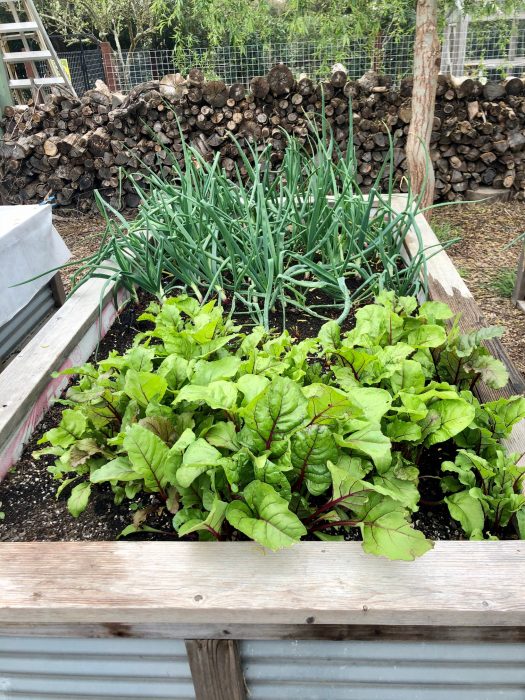
One of our raised beds – Beets in the foreground, red onion sets in the background, about 4 weeks from harvest, around April 10th.
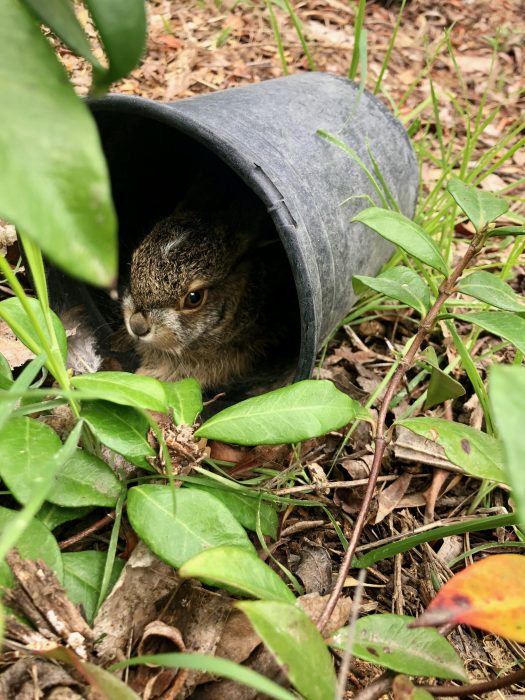
The bunnies have been reproducing especially rapidly this year. This baby here has possibly lost its mother and is temporarily hiding in this empty plant container till dark. Always interesting to follow which animal populations expand or shrink depending upon conditions. We’ve always had the usual gophers, deer, rabbit, and fox, and recently a family of weasels under the rock pile. Sonoma farm life
Rescuing a downed Red Tail Hawk, sadly this story doesn’t end well…
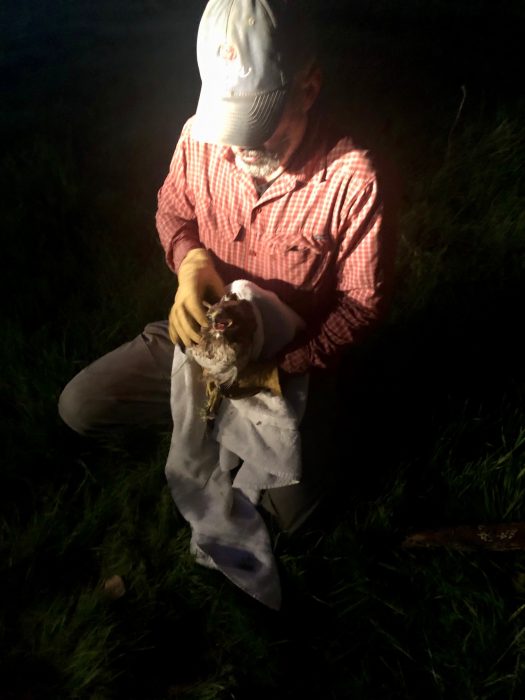
I was on a walk at dusk down by the Arroyo Seco creek and came upon an injured and very confused Red Tail Hawk. Called my friend Chris Melanćon, a trained falconer, and later that evening we captured and boxed the bird to keep it safe and warm overnight.
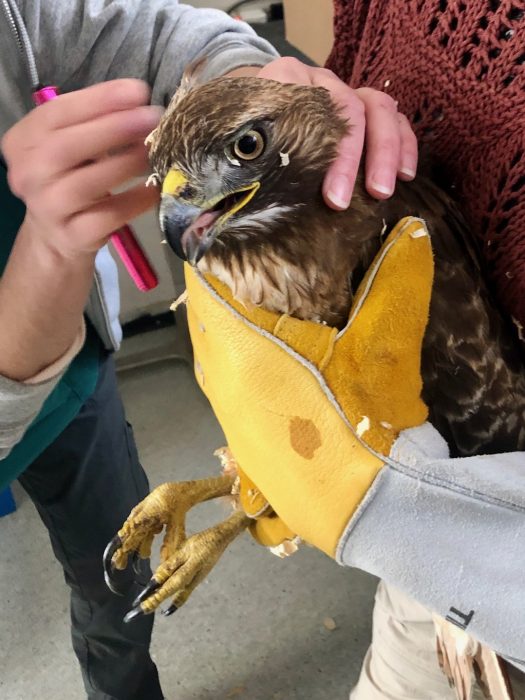
Skilled nurses carefully checked the health and condition.
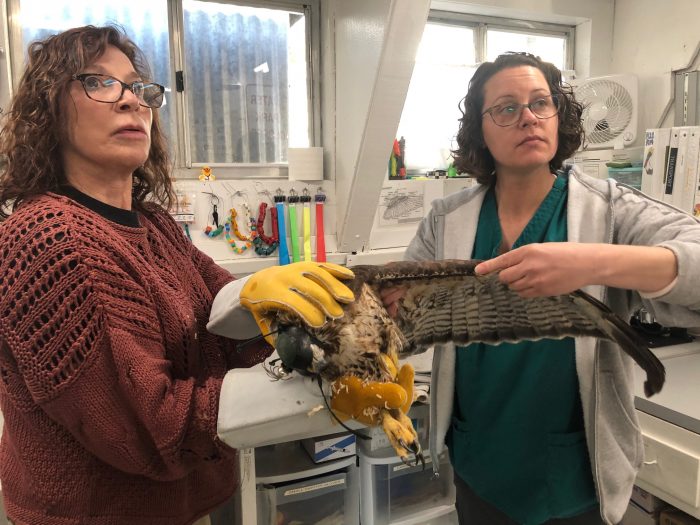
And checked all it’s vitals, including wings of course.
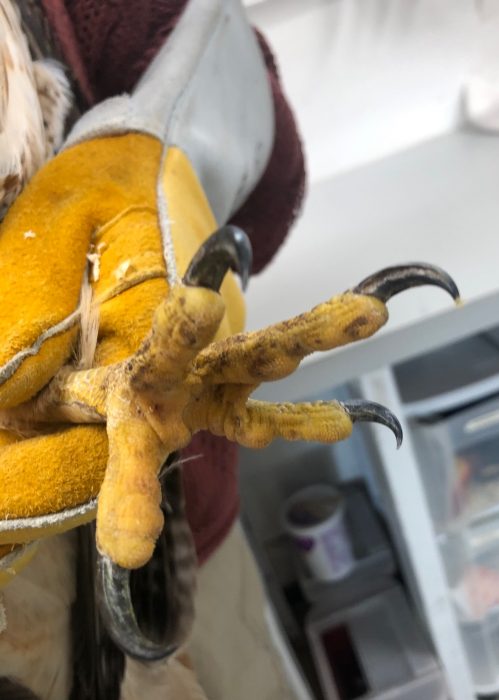
You can see these raptors have quite the extended reach and very sharp claws to grab their prey while in flight.
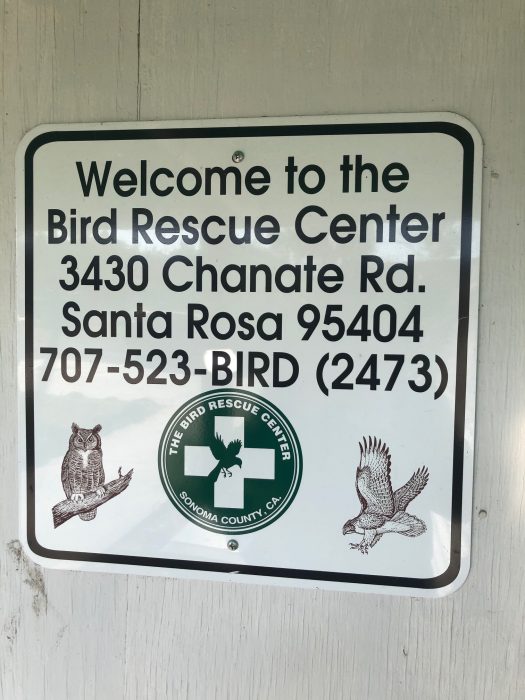
Sadly, our bird survived only a few days at the Rescue Center. Apparently it had suffered a neurologic injury and just could not pull through. We did our best. Nature at work. Sonoma farm life
Willow tree cuttings
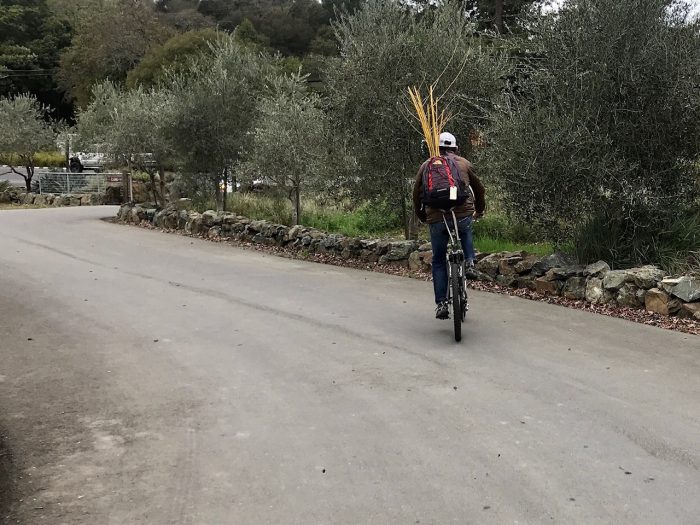
Found myself in Healdsburg on a bike ride and met up with a fellow winemaker who has a rare yellow-barked willow. Genus Salix. Could not pass up the chance to fill my backpack with cuttings which in the case of all willows are quite easily transplanted.
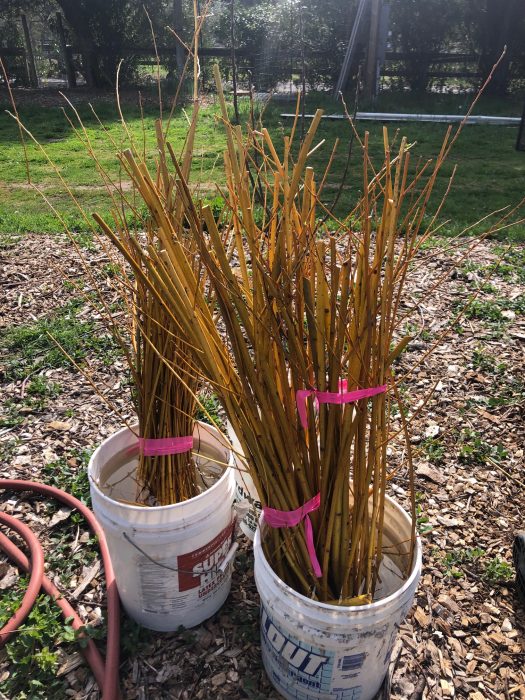
These willow cuttings are soaking before going into the ground. Willows will sprout roots from almost any woody cutting. They are fast growers too. The roots are very invasive so it’s a bad idea to plant them near pipes and sidewalks. But they are an excellent plant almost anywhere else for instant shade. And other plants and trees will naturally fill in under them as the willows age-out and die-off later.
Mowing the native grasses
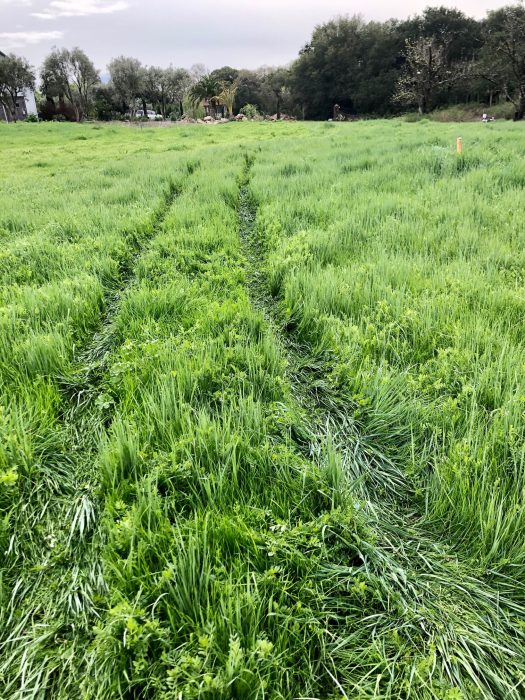
Before: This is a good time of year to give the grasses and forbs (pasture) a quick haircut.
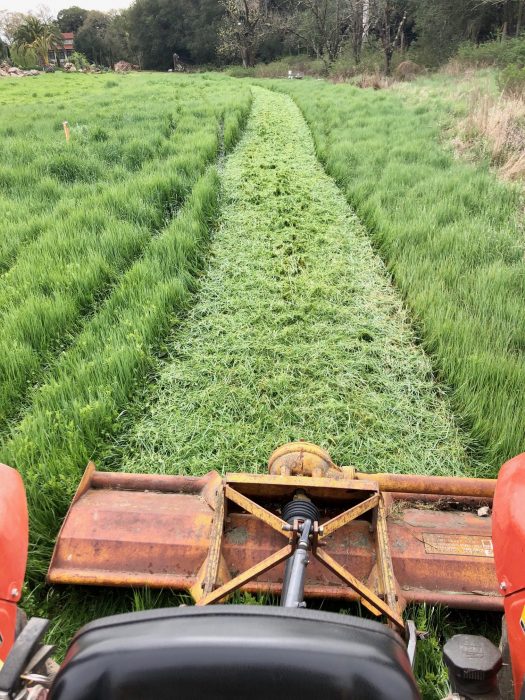
After: The first cut-pass with my old 1950’s Mott flail mower mounted onto the PTO of our Kubota tractor. The smell of the cut grass is intoxicating. I do this to create a dry and comfortable walking path out in the pastures, leaving the remainder to grow high in the spring.
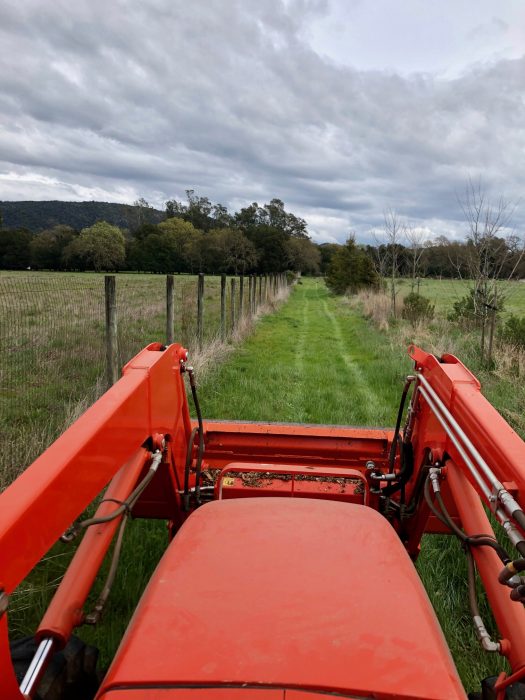
This is view of our north fence line getting ready to mow.
The old Mott flail mower occasionally enters a complaint!
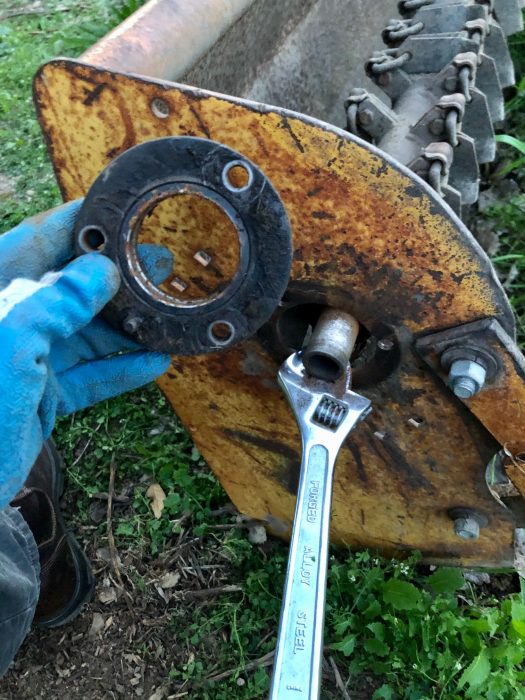
The flail mower takes a real beating. After some heavy use, on occasion a bearing will burn out. You can see here that the bearings are completely gone. Had to learn how to replace these. I’ve heard many stories of grass fires starting when the bearing fails and the red-hot ball-bearings fly out on to dry grass. It’s best to be safe and mow while the grass is still green.
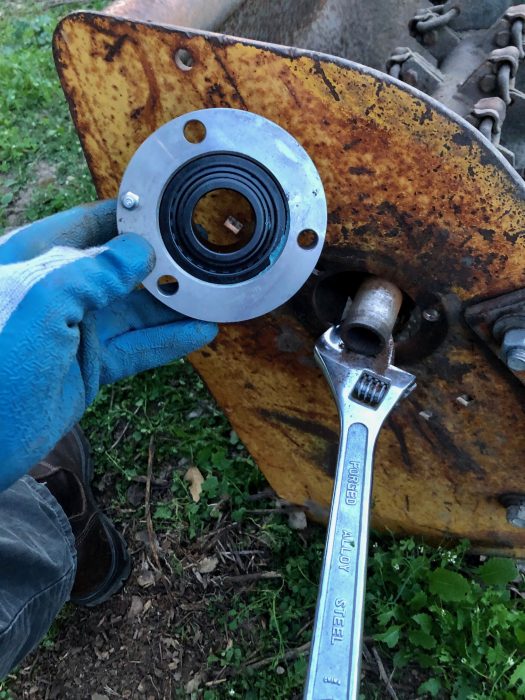
About to install this new bearing mount on the cutting shaft. $250 and 2 hours later.
Distilling wine into ethanol to make grape-based Brandy and Grappa
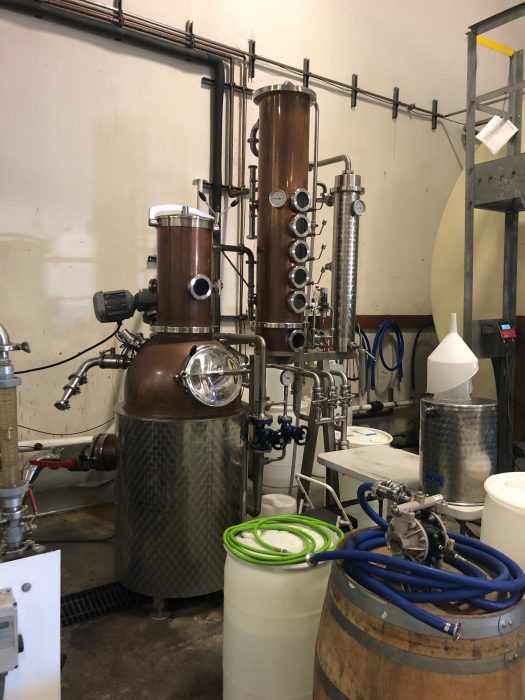
Start off with a half-ton of what’s left in the wine press after pressing, called pomace, and end up after distilling with several gallons of 186 proof pure distilled ethanol. Then that is diluted back with pure water to reach the targeted brandy/grappa alcohol level 35% to 60% by volume (ABV). Then it’s aged in oak or whisky barrels or flavored with fruit as desired. And then bottled and labeled. The story of grappa.
Chickens and Auto Solar Chicken Door
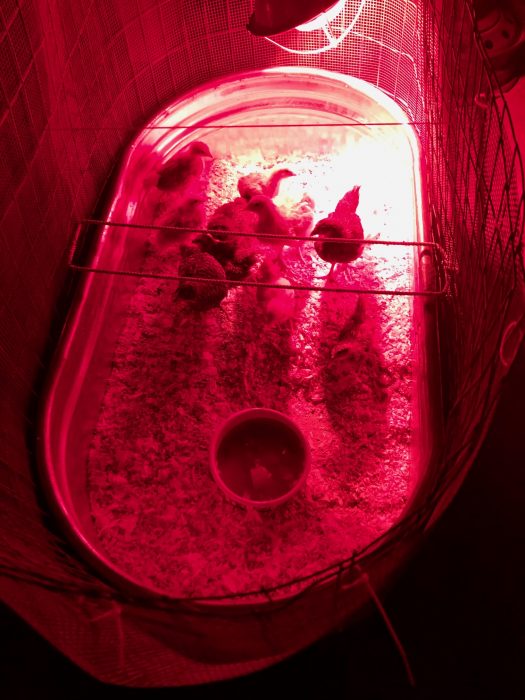
Last month I added eleven new chicks seen here in the incubator. Just add chicks, water, and food, and presto…in about 21 weeks all those hens will be laying 2 eggs every 3 days!
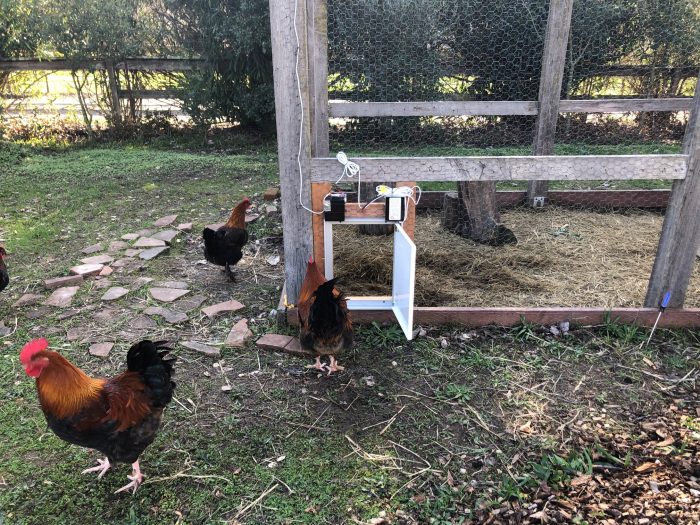
This is an automatic chicken door. How does it work? A solar panel (on the coop roof, not in view) charges a 12v battery (top left of the white door), the battery operates the motor (top right of door), and a light sensor (not in view) opens the door at first light and closes it a dark. There is also a ‘last chance’ feature where the door re-opens for one minute 5 minutes after dark. The chickens quickly adjust to the routine and religiously get themselves inside before the door closes for the second time at dusk. You can find this excellent equipment at Chicken Doors. Sonoma farm life
Mulching
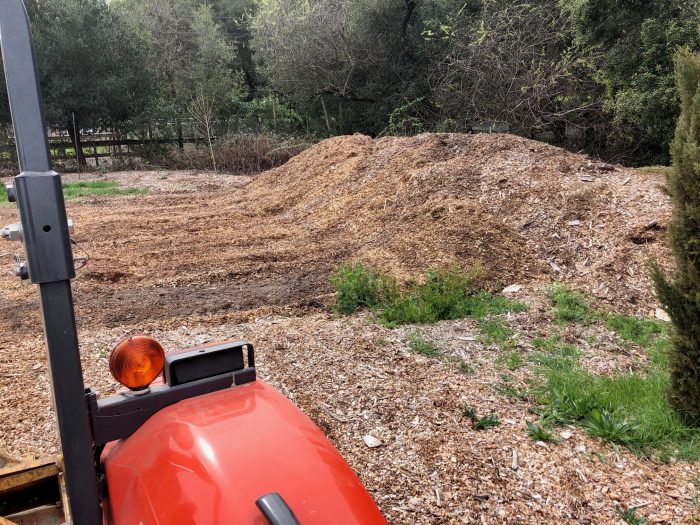
Local tree trimming companies are more than happy to have a free place to drop off chipped tree mulch. This pile represents about 20 truckloads. This material is very useful around the farm; especially with roses and plants that require moist soil and little weed competition.
Mustard blooms
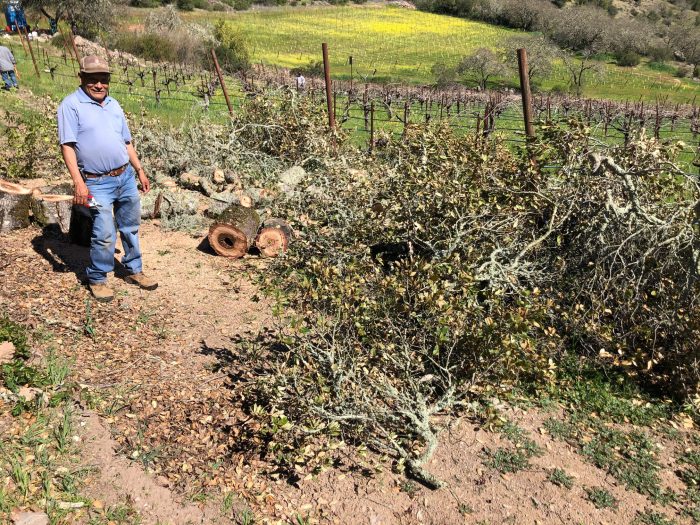
In one of our client vineyards, a tree fell in the recent strong winds, so we got out the chainsaws and went at it. In the background you can see a new Cabernet vineyard block we planted last Fall, and the mustard coming up nicely.
Hot air ballooning
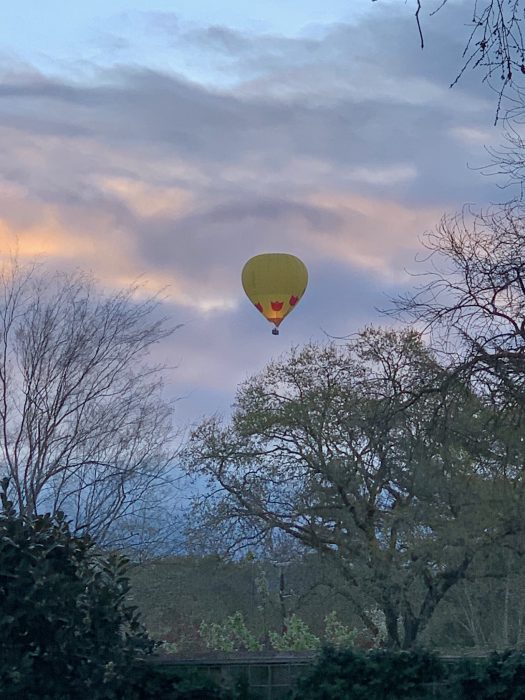
In Sonoma, you can look up pretty much any early morning and see the tourists enjoying their hot air ballon rides. The air is very still and it’s pretty cold out too. That’s why they keep the coffee hot! This one, the well-recognized ‘red tulips’, is from Napa Valley Balloons.
The end of the day on the farm
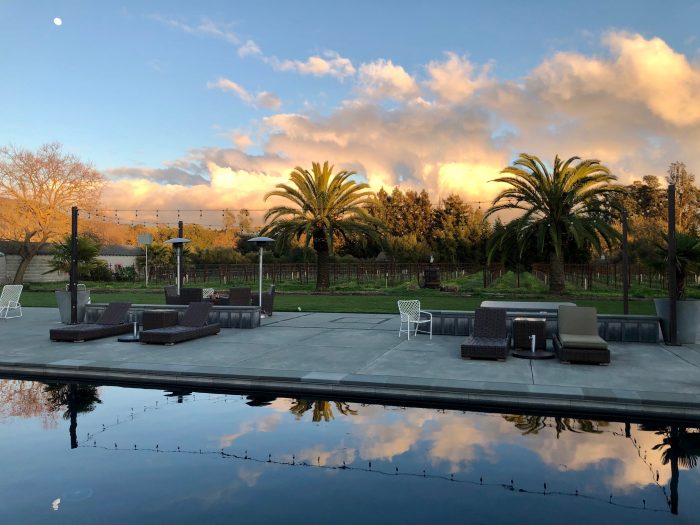
The sun begins to set on another day on the farm, as the low clouds glow and the full moon rises.
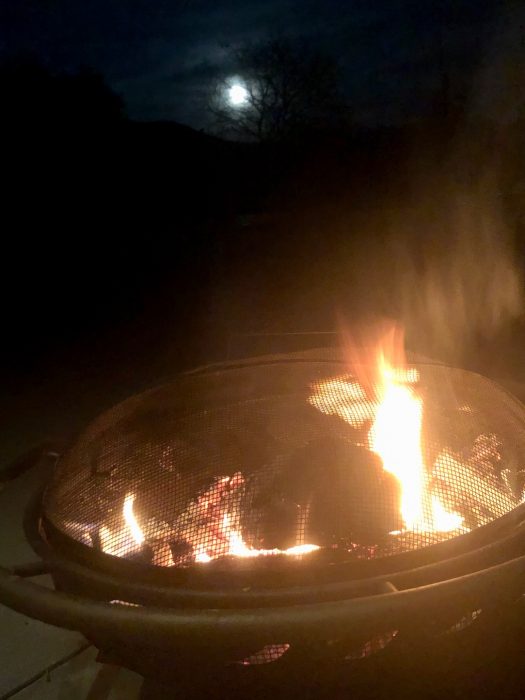
It’s a real treat to have friends over for an authentic wood fire, only possible on cold damp winter nights, and no matter what, we use the spark arrester. Why? Everyone in Sonoma is rightfully fearful of loose sparks starting a wild fire.
Just for fun: The biggest grape and wine convention in the United States, the Unified Grape and Wine Symposium
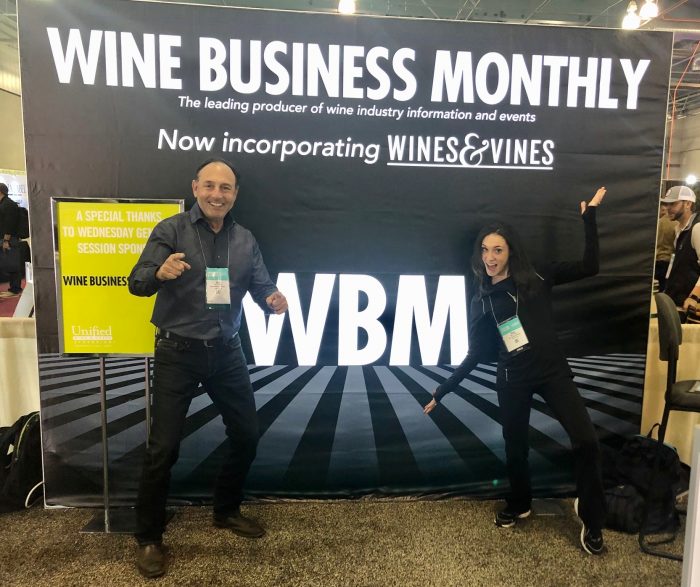
One of the most popular trade magazines in our industry, “Wine Business Monthly“ always has an informative booth. Assistant Editor Stacy Briscoe welcomes me to the show. This is also the ‘go-to’ website for all things grapes and wine – buy/sell grapes or bulk wine, learn about the latest trends, etc.
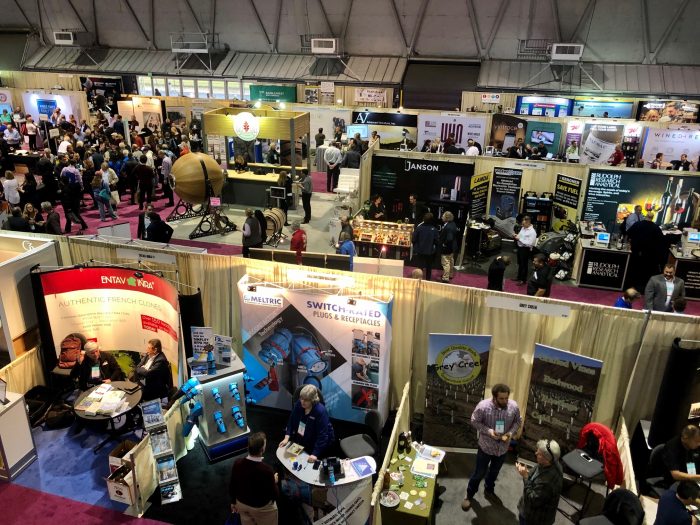
The convention covers every imaginable aspect – from vineyard farming tools to heavy equipment, to the latest in drone-applied sprays. And in wine, everything from bottles, corks, and capsules, to pumps and valves, and laboratory testing.
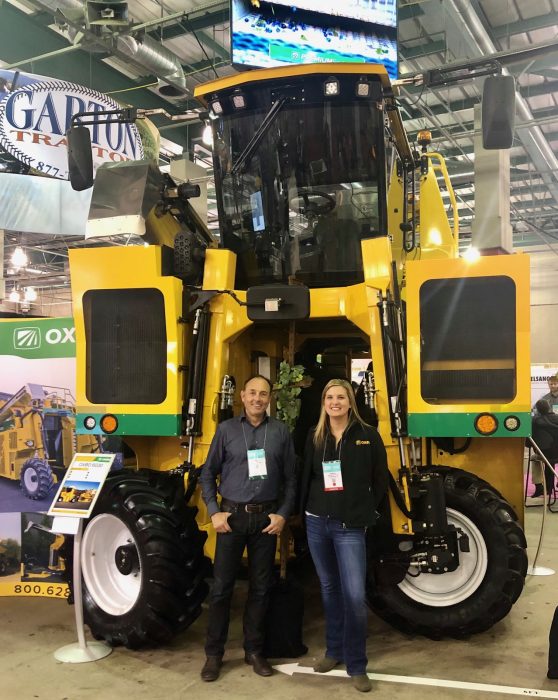
One of my favorite activities each year is to visit the ‘large equipment’ yard. I’ll never have a use for this million-dollar computer-controlled self-propelled mechanical harvester/sorter…but it’s really interesting to stand next to it and walk around (and inside). This behemoth can harvest upwards of 25 tons an hour, with one operator! Equal to many dozens of laborers and people-hours.
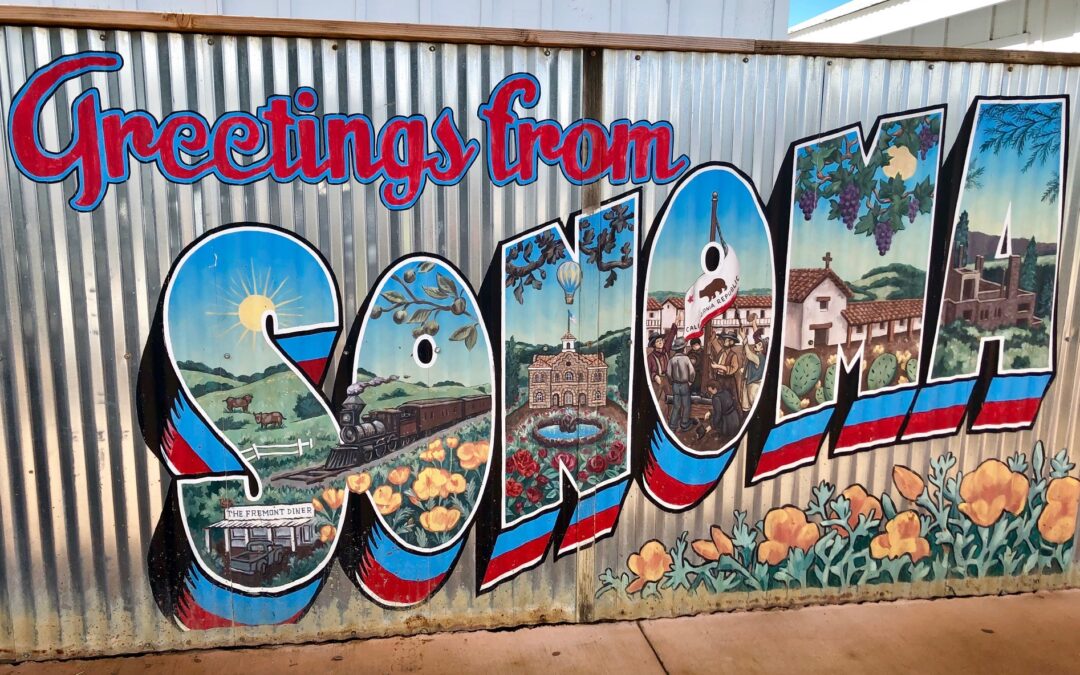
Jan 10, 2020 | Wine
Here at the Hydeout, we have many projects going on around the property.The latest addition being a chicken coop! Many friends in Sonoma have backyard chicken coops and we thought it would be great to join in on the fun. Raising chickens on property is part of a growing movement to reconnect to nature and grow your own food. Everyone willingly shares knowledge and experience, and eggs. Our growing brand of Dysfunctional Family products will soon include free-range eggs, a project we’re calling Dysfunctional Family Chickens.
Enjoy this pictorial essay on everything (almost) you need to know about raising backyard chickens:
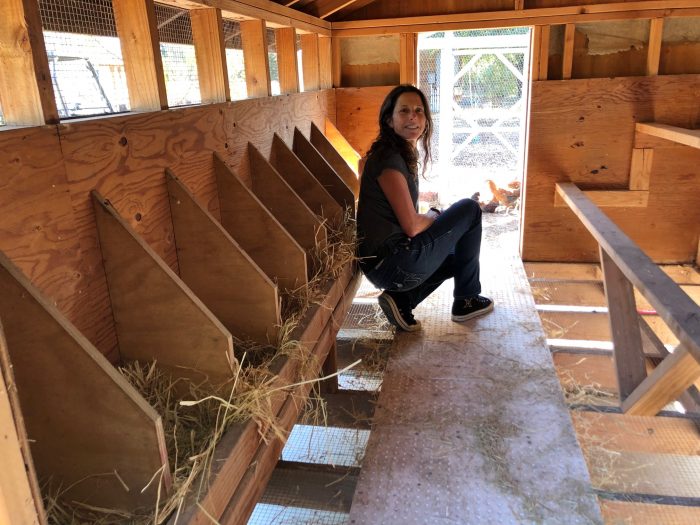
To start, you need a coop. It can be very modest. Or you can start with a roomier model like we built here. Cynthia is checking in on things. To the left are the ‘nesting boxes’ where the chickens lay their eggs, to the right are the ‘roosts’ where the chickens sleep well above the ground at night (as is their preferred habit), and in the background is the ‘run’ where the chickens hang out in the morning until we open the door to free range around the ranch all day until sunset.
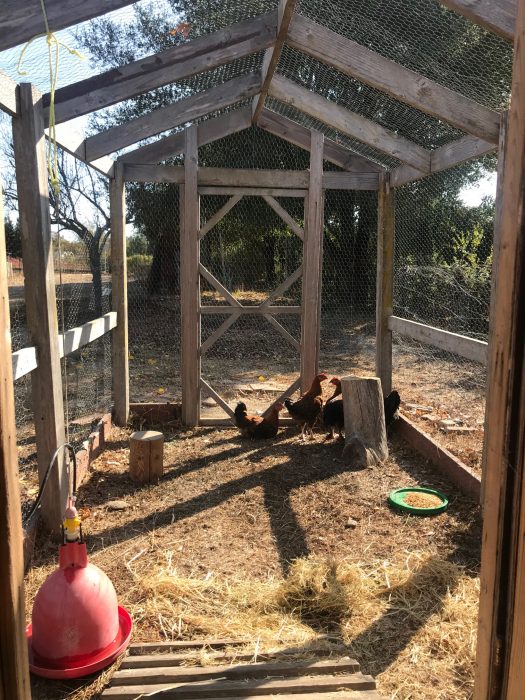
We started with 5 small very shy birds. They grew very quickly, from this…
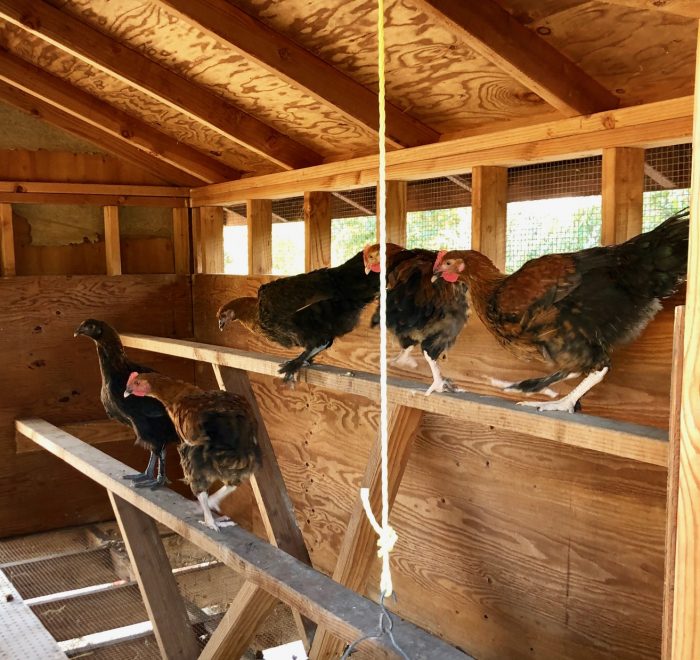
to this…
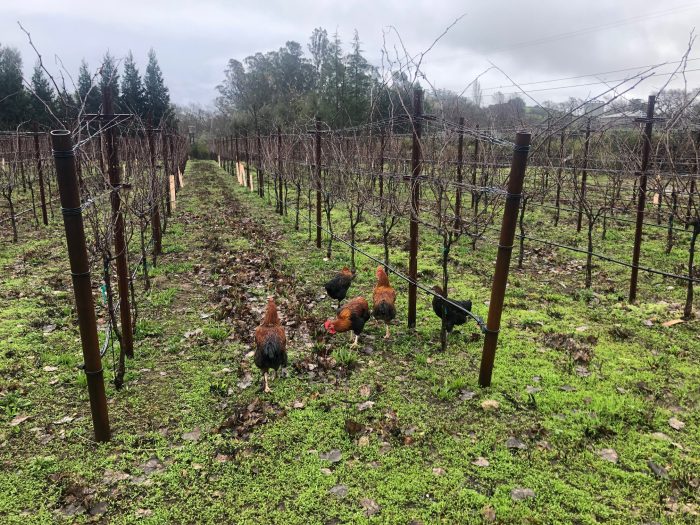
Hilariously, 3 of the 5 chickens turned out to be roosters. Note red ‘combs and wattles’ and perky tail feathers. Even the professional hatcheries have some difficulty determining the sex when they are young chicks. More hens will be added when the weather warms up a bit.
Most backyard coop experts recommend one rooster for every 8-10 laying hens. This general rule keeps the flock in calm order, and the rooster keeps an eye out for predators too. More than one rooster and those boys will constantly fight for dominance and argue over control of every hen, wearing themselves and the hens out.
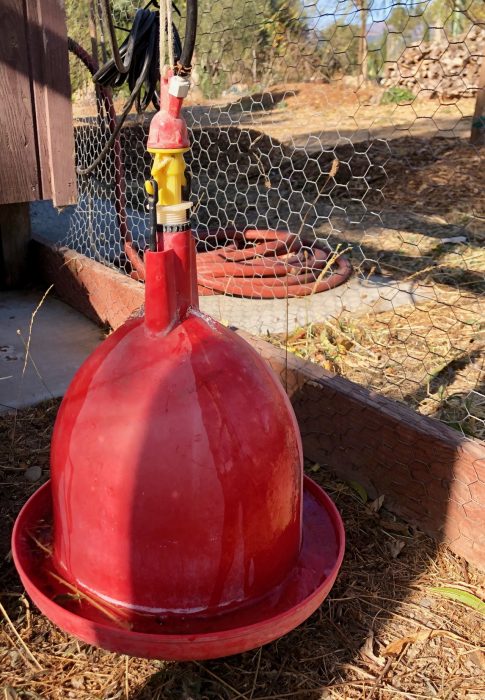
To start, chickens of course need water and food. This device is a simple automatic water device – connected to a garden hose. It hangs slightly off the ground and auto-releases water into the channel as needed.
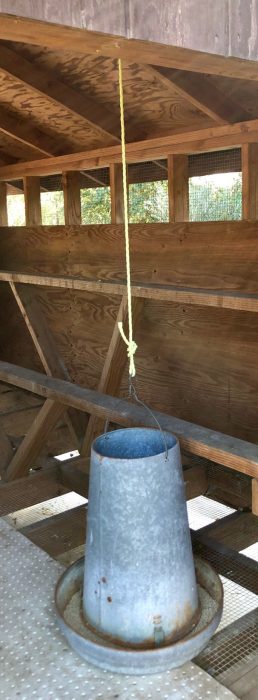
And this is a very simple multi-day automatic feeder – the feed is fed into the top manually, and is slowly is fed out at the lower rim as chickens consume the feed.
What do chickens eat? Generally, chickens will happily live on the grass and weeds and bugs around your house. But for high quality eggs and good chicken health, there are some helpful supplemental options too:
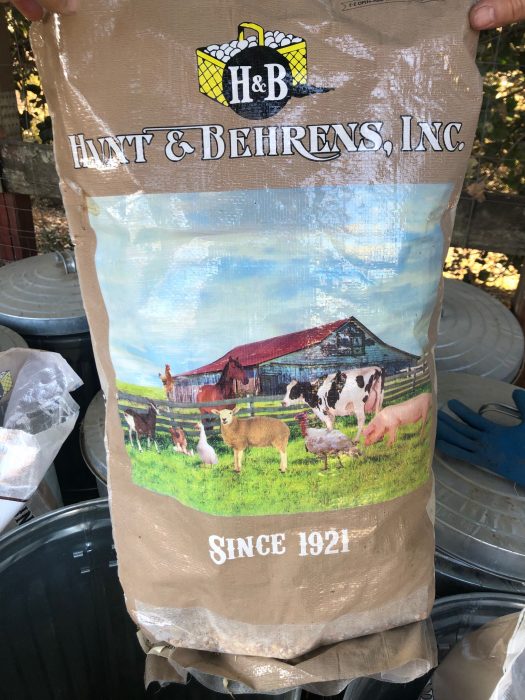
This standard Hunt and Behrens “laying mixture” is a blend of 16% crude protein, 2% fat, and 20% fiber and ash. This is their primary daily feed in the first 5 months. This feed costs roughly $17 for 50 pounds and will last roughly a month to 6 weeks for 5 growing chickens.
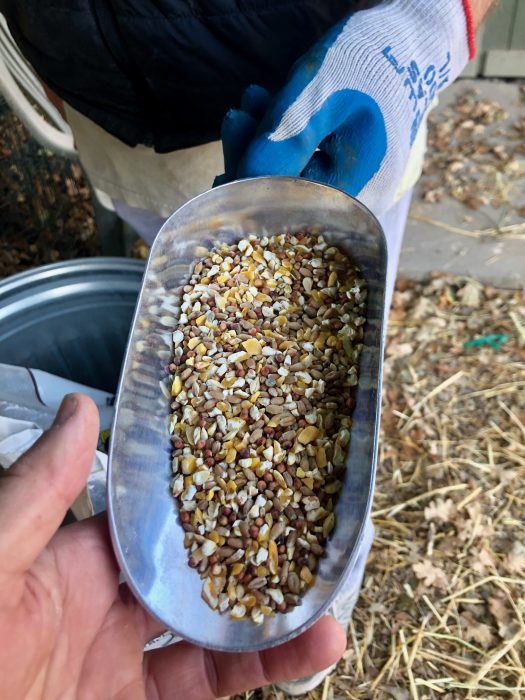
Our Dysfunctional Family Chickens, just like us, love a yummy treat. This is a corn-and-seed based “scratch.” It is lower in protein than feed, but the chickens go crazy for it, and once a week or so it is good entertainment for you and a party for them.
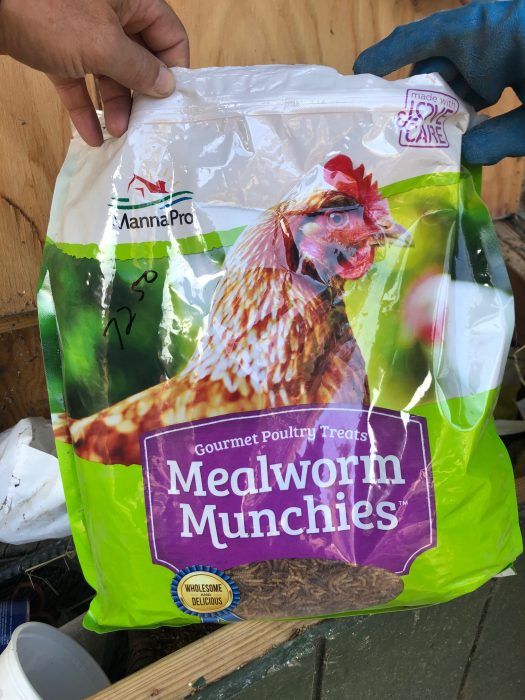
An ever bigger treat is mealworms, rather expensive and more of a luxury supplement than a necessity.
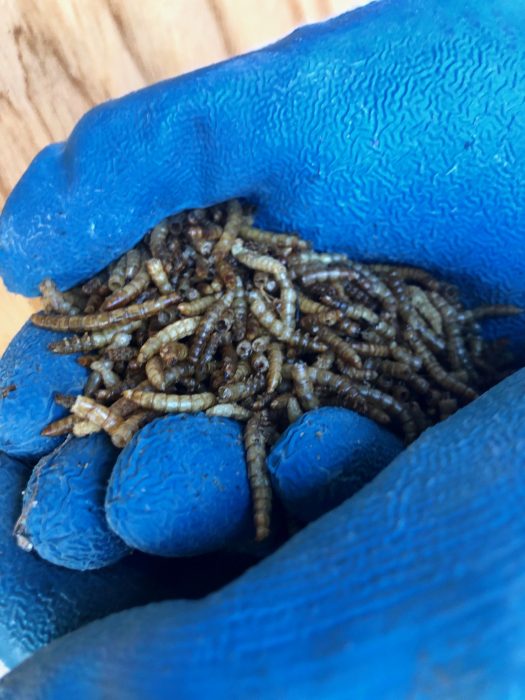
This is what the worms look like. The chickens simply freak out of them, and they are gone in an instant.
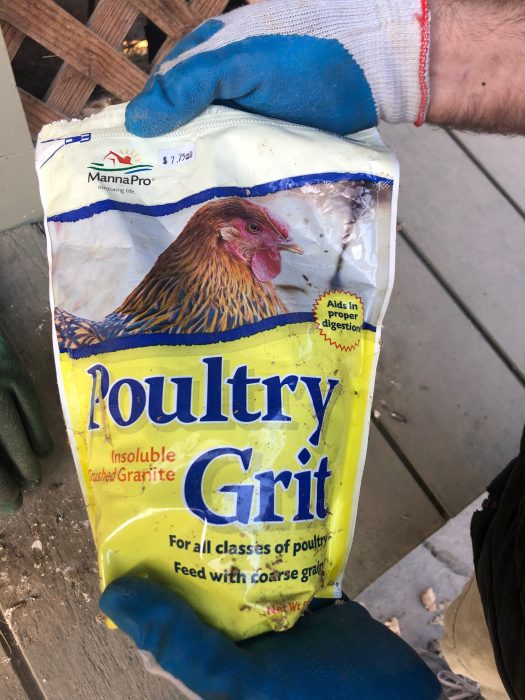
Chickens have a ‘gizzard’ which is a strong muscle that helps grind up hard seeds and so forth (such as corn scratch). This insoluble granite-based gravel is added to their snacks to keep their gizzards full of small stone.
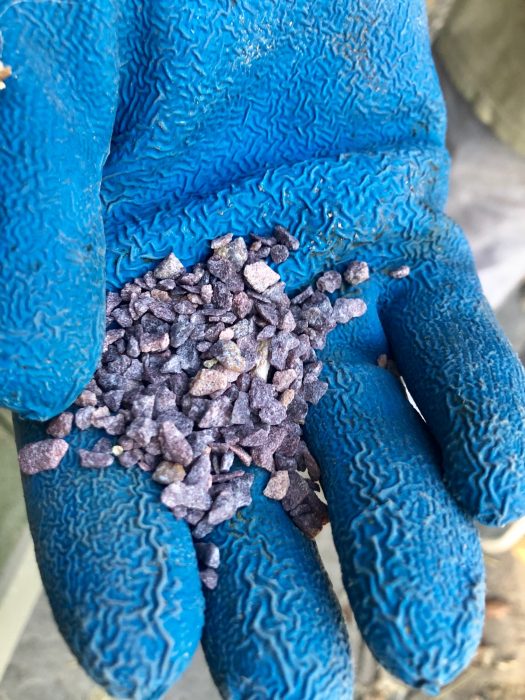
Closeup of granite-based grit.
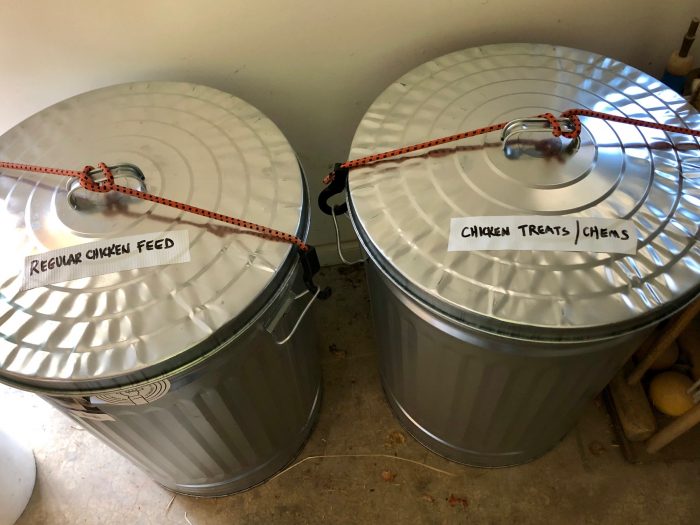
Chicken feed and supplements can attract rodents very quickly. That’s why it’s important to keep these products in closed metal cans and well secured. I label the tops so that if others are helping out around the ranch, they know were to find the various feeds.
Last, here are a few short fun videos to click on, showing the daily chicken activity:
Morning drink of water
Dinner time
Chicken scratch
Time lapse chickens
Time lapse neighborhood walk with Cynthia Wornick
Before I share news around town, a special chicken related call out to our friendly neighbors at the Boxcar Chicken and Biscuits on Fremont Drive in Sonoma (formerly the Fremont Diner, and recently renamed yet again as Lou’s Luncheonette). It’s still delicious food, and a fun place to hang out!
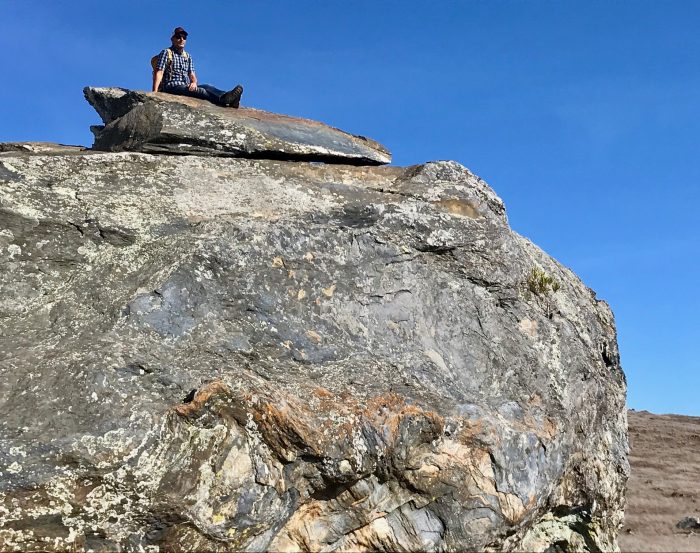
Winter day hike atop Turtle Rock in Marin County – one of the best close-in bouldering areas in the Bay Area.
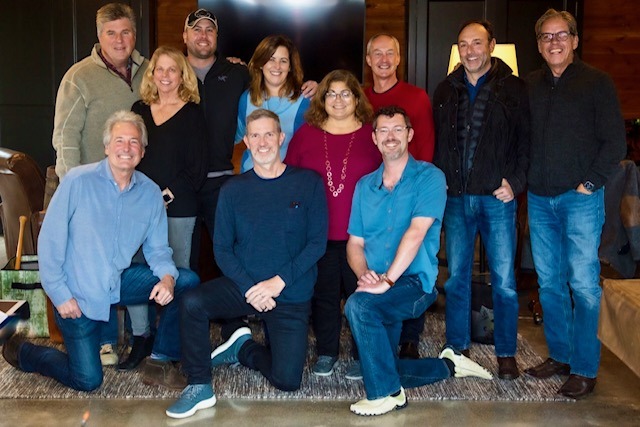
Sonoma DYL workshop #1: After just completing the 2 1/2 day “Designing Your Life” program – a book, workshop, and course from Prof’s. Burnett and Evans at Stanford Univ. The Stanford “Life Design Lab” applies design thinking to tackling the “wicked” problems of life and especially vocational wayfinding. It was a great productive workshop. Many of us who already have well-developed careers found new energy and expansive ideas arise from the program. And those searching for a transition to a new career also worked towards exciting new personal roadmaps. Front row: Peter Ferris (co-coach), John Hornbaker, Jay Rooke Back row: Ford Goodman, Holly Bennett, Kurtis Rissmiller, Sharon Knight, Beth Stelluto, Thomas Ward (co-coach), Ken Wornick, Bob Berg
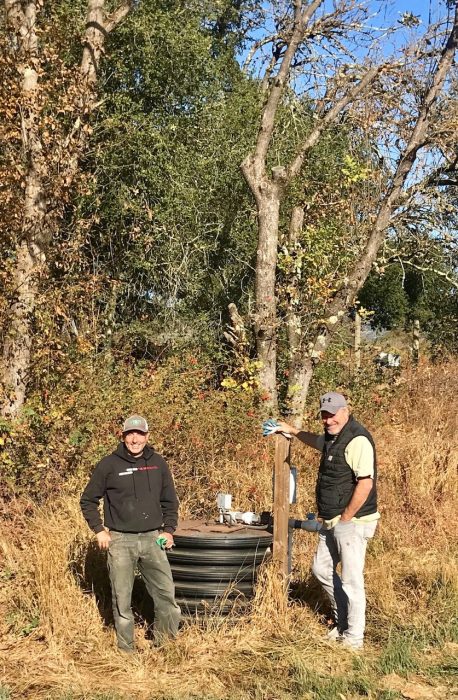
My neighbor Steve Bush, a chicken expert in his own right, is over for a visit; here examining our hand-dug 16′ deep alternate agricultural water well – this well atomically turns on and sends water to our 5000 gallon irrigation tanks – until it dries out around June, then the deep water well takes over.





